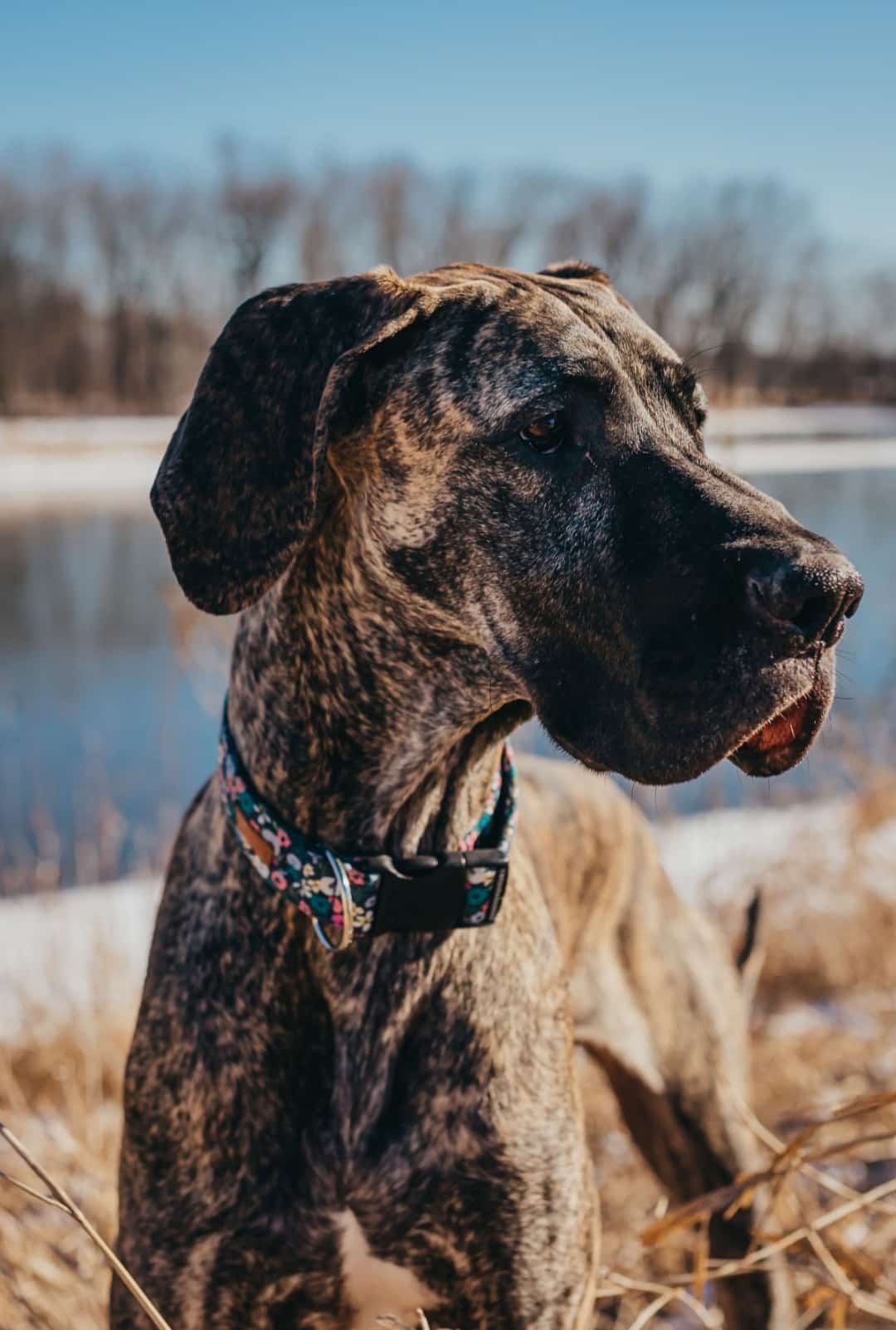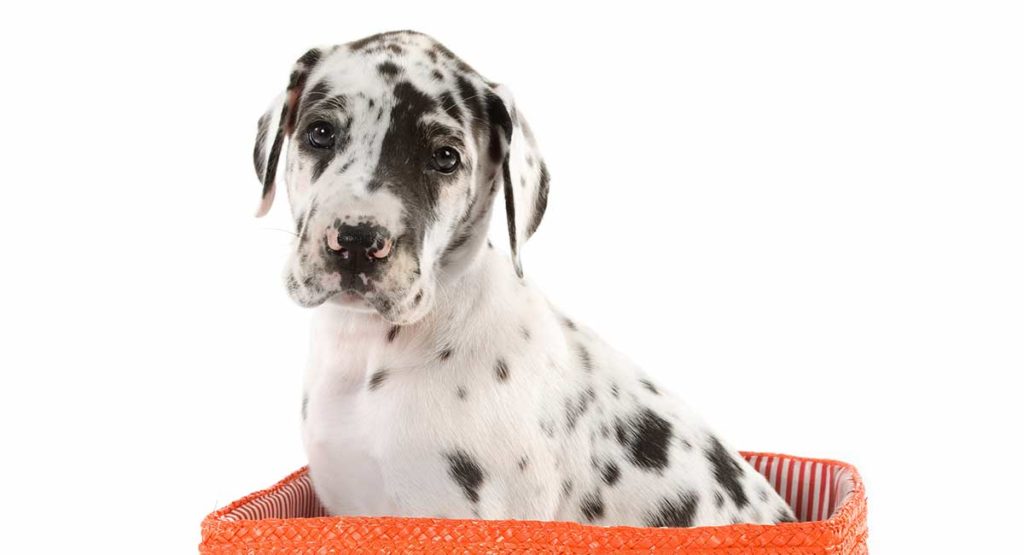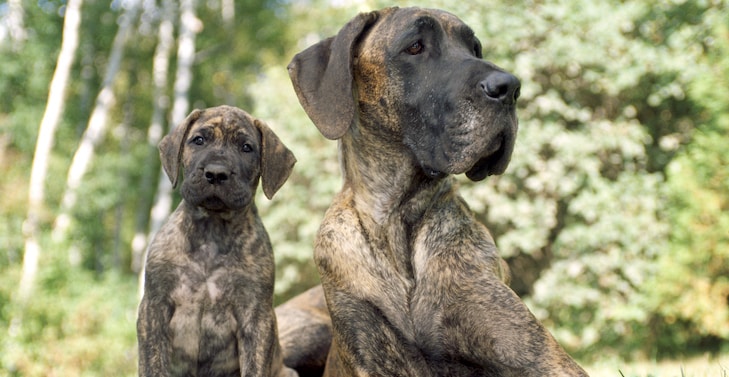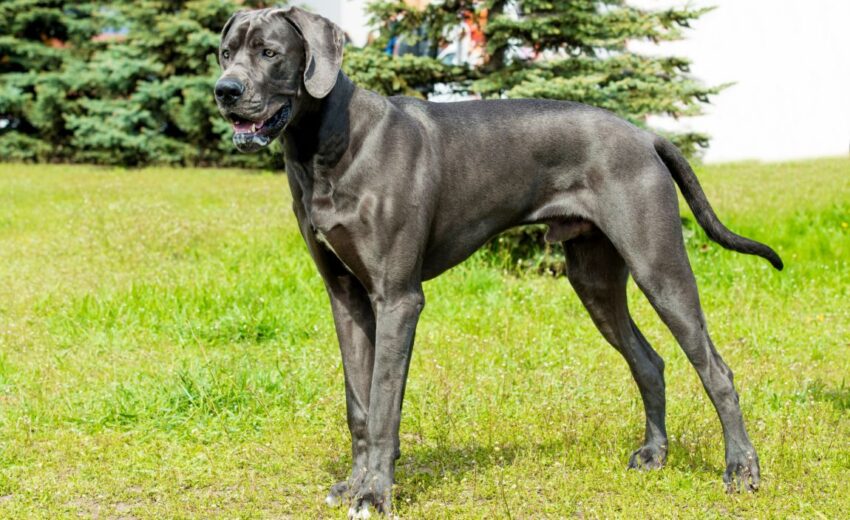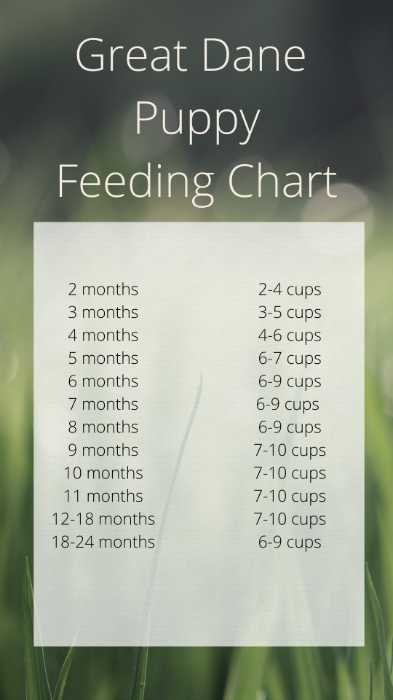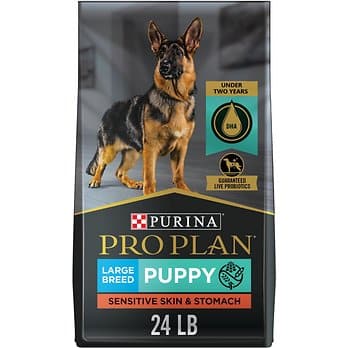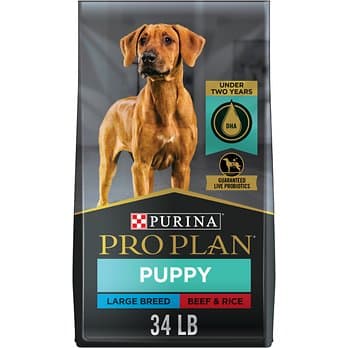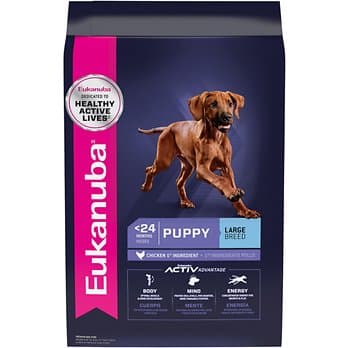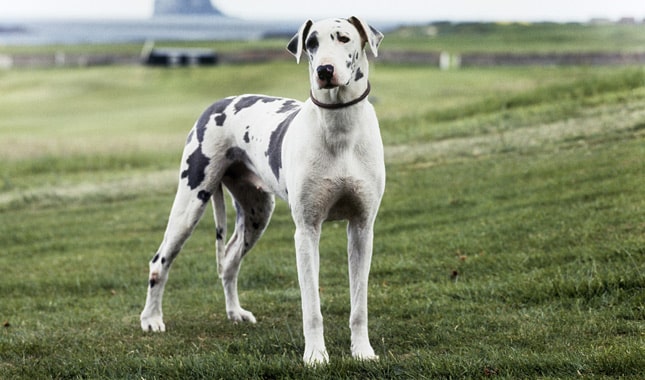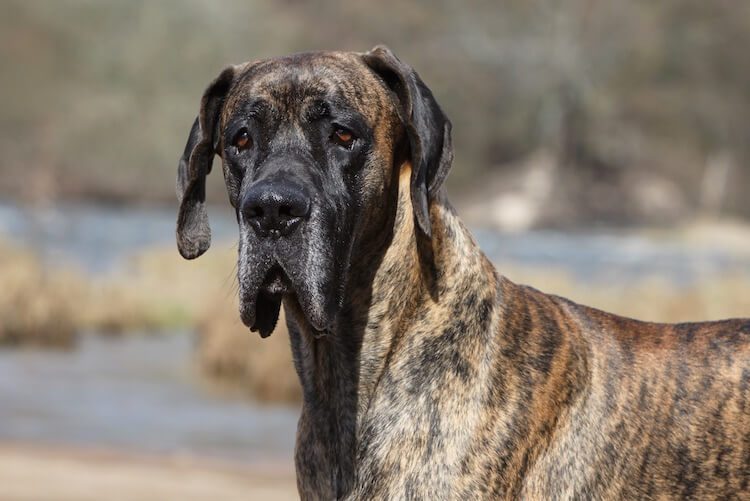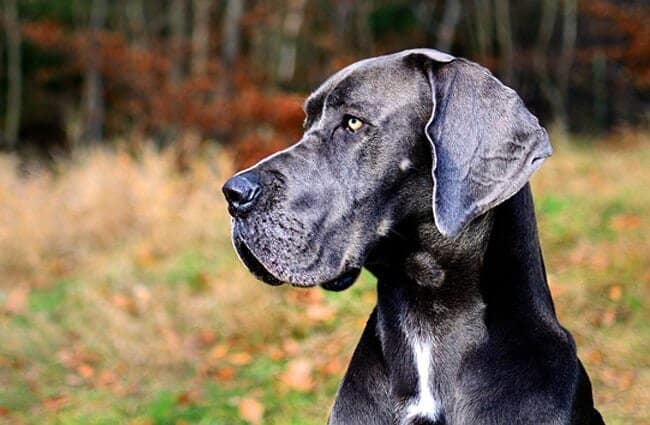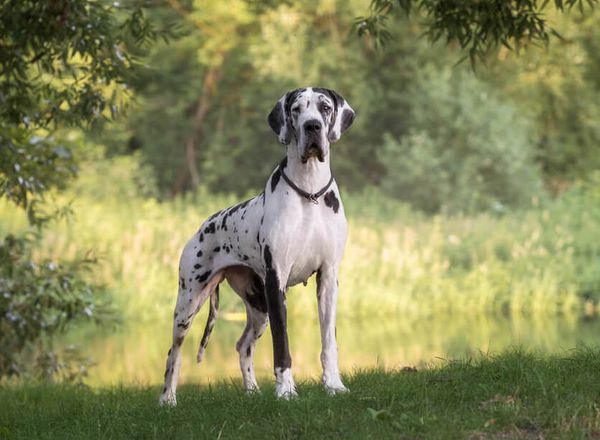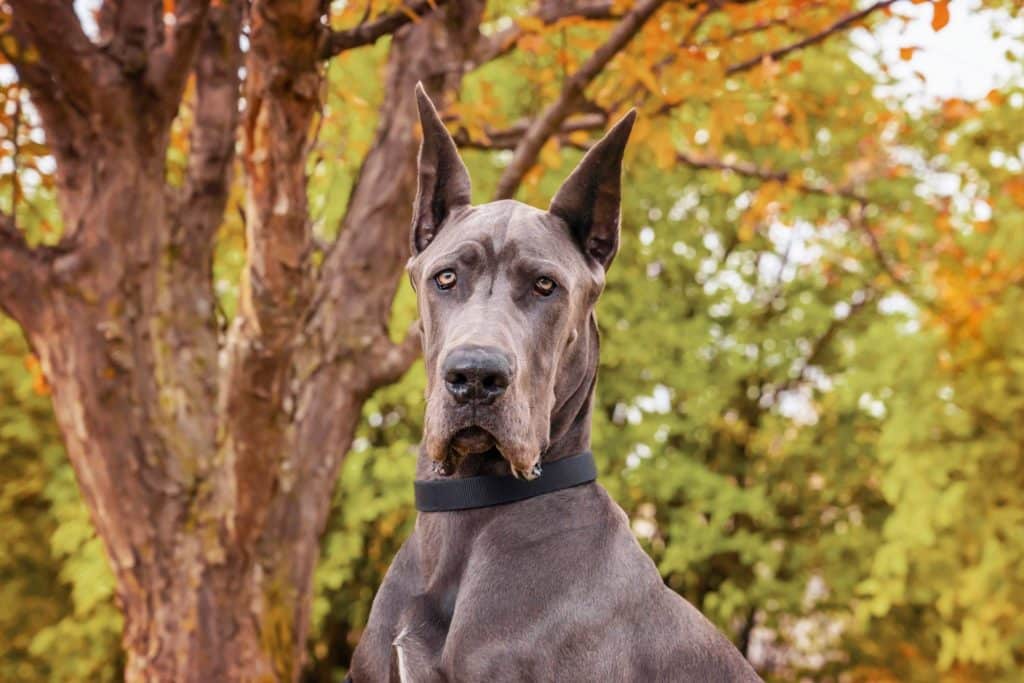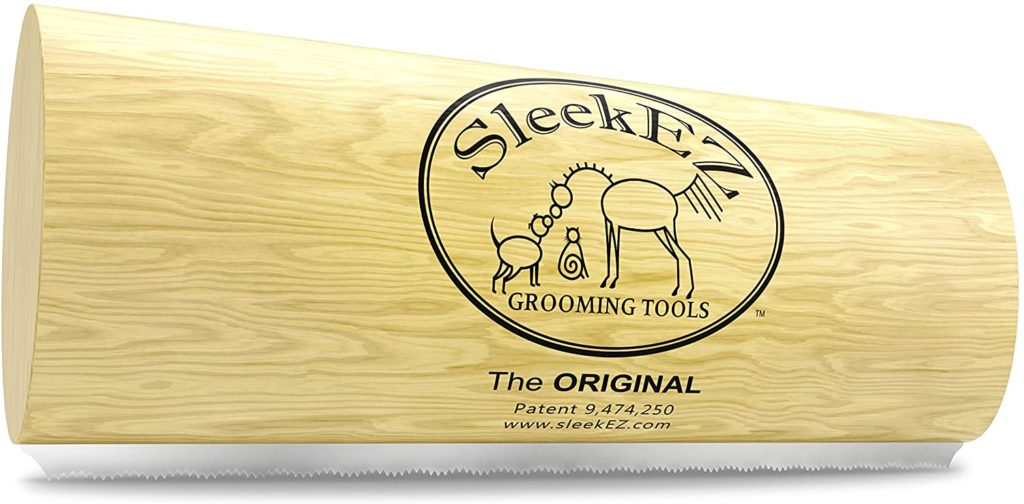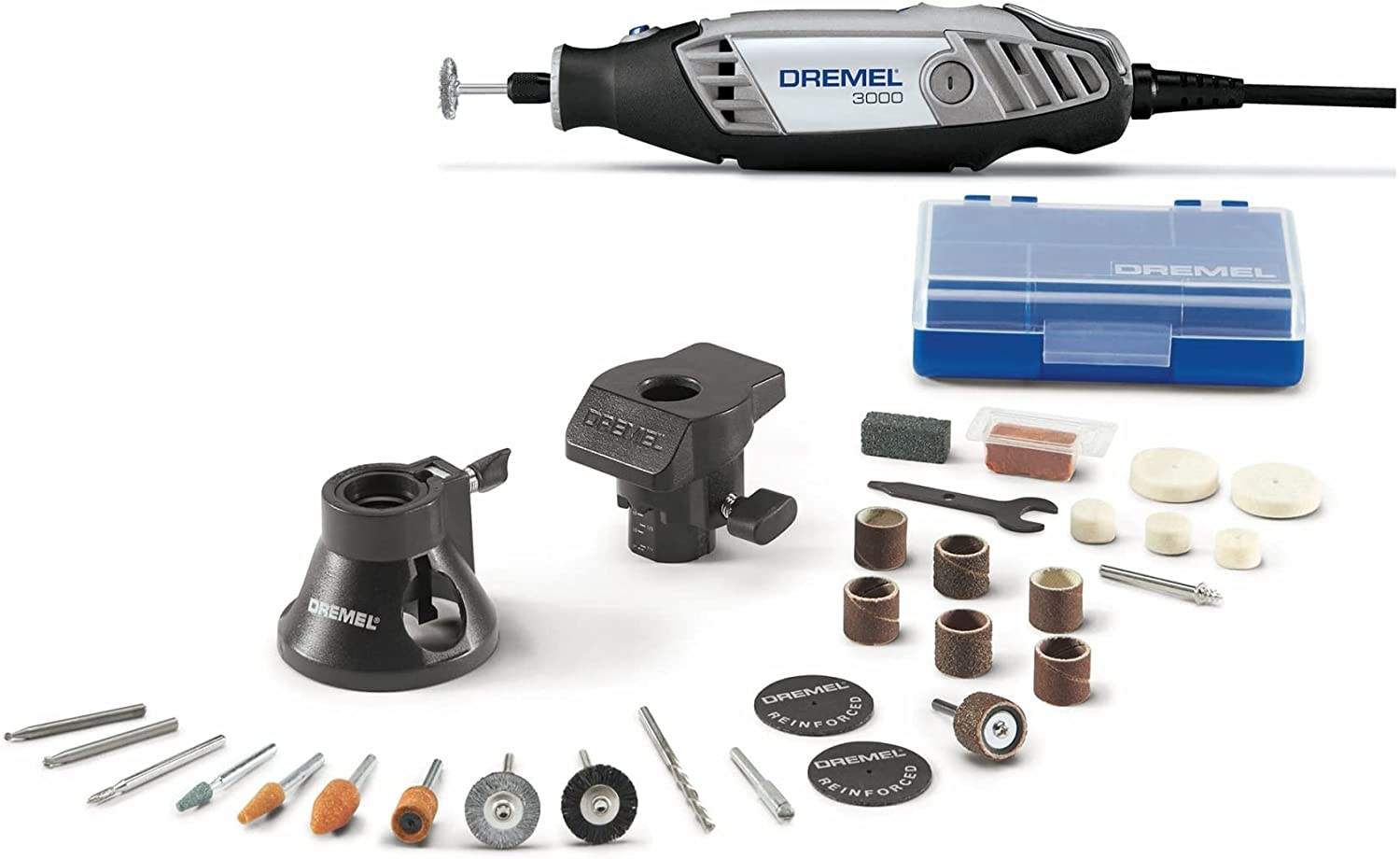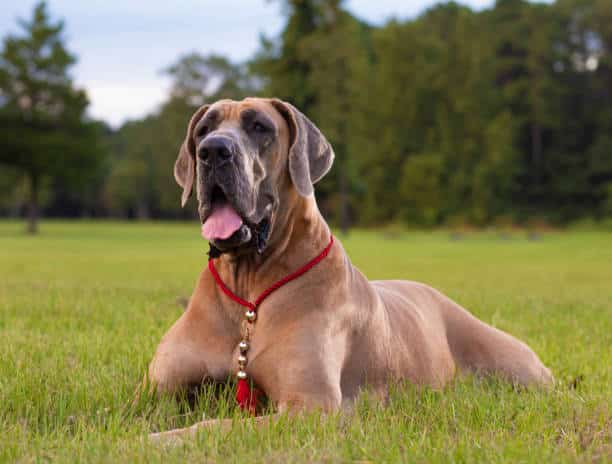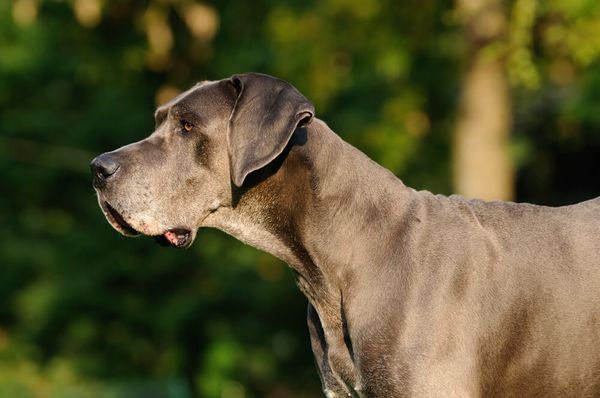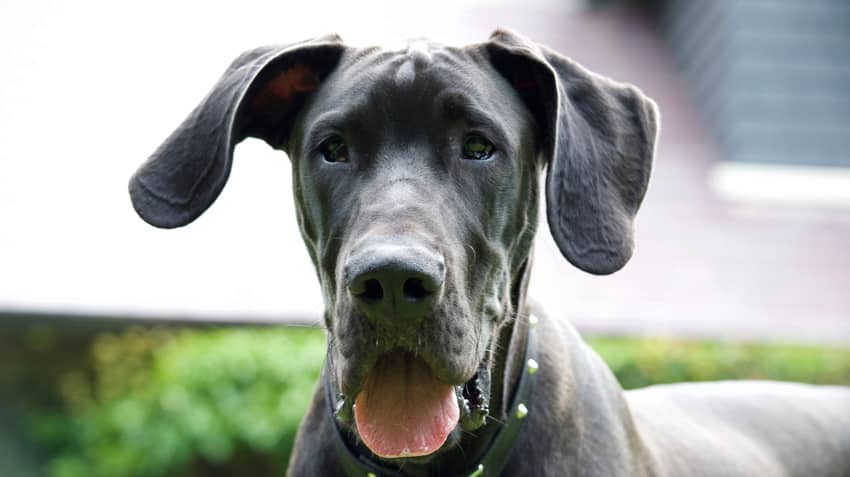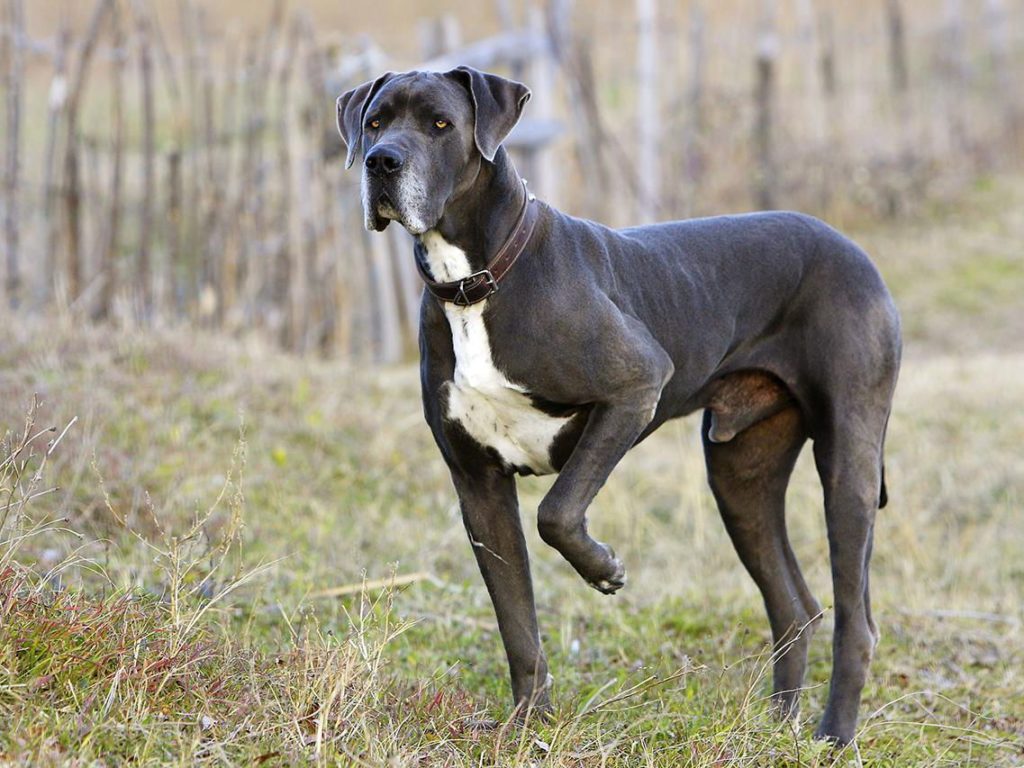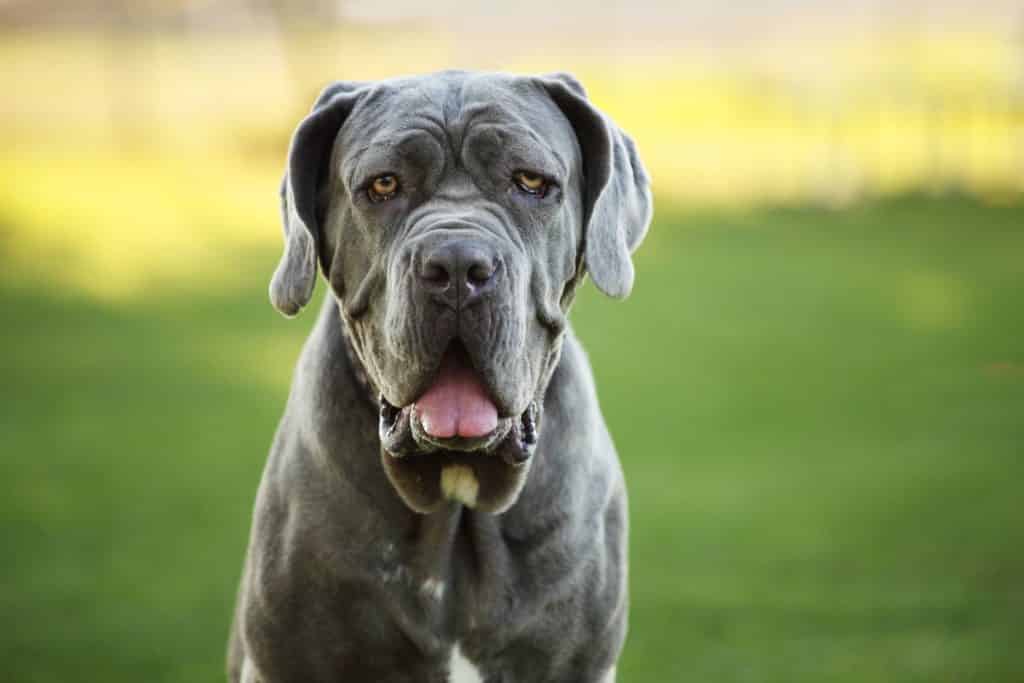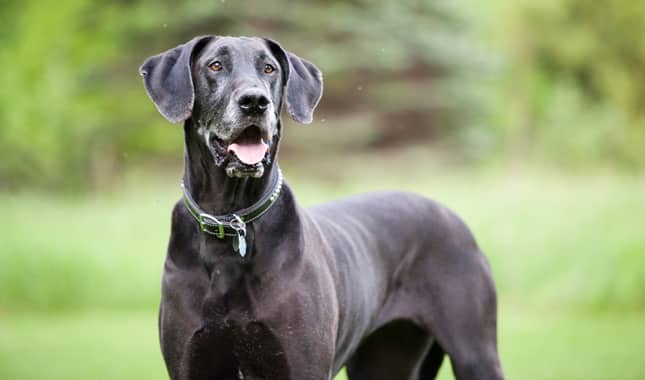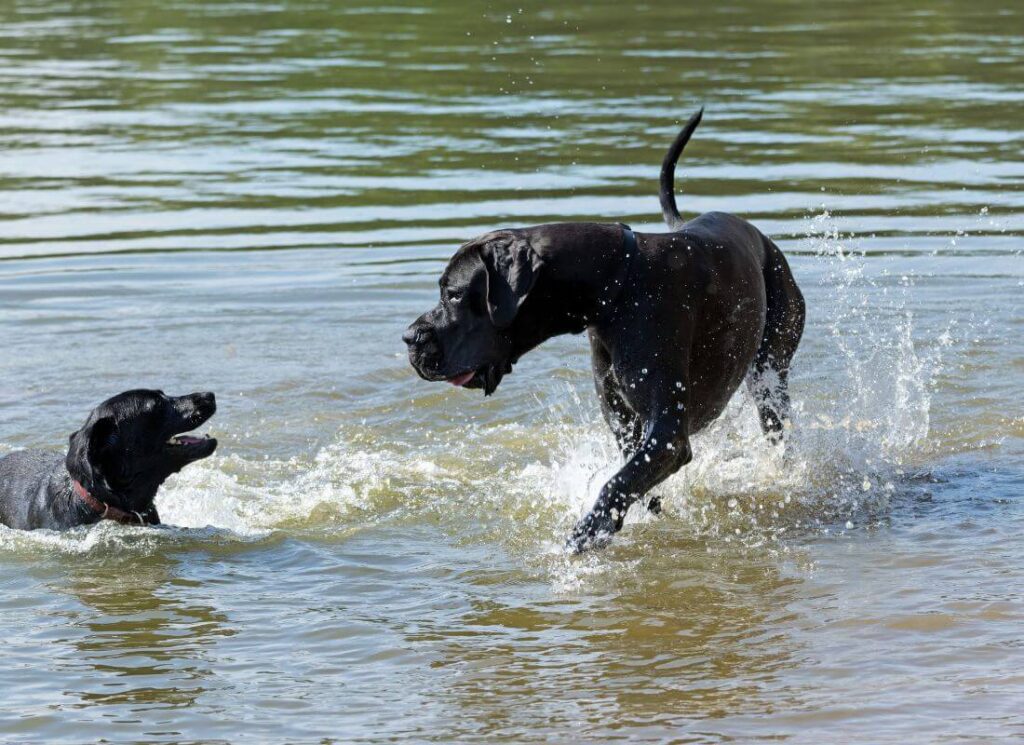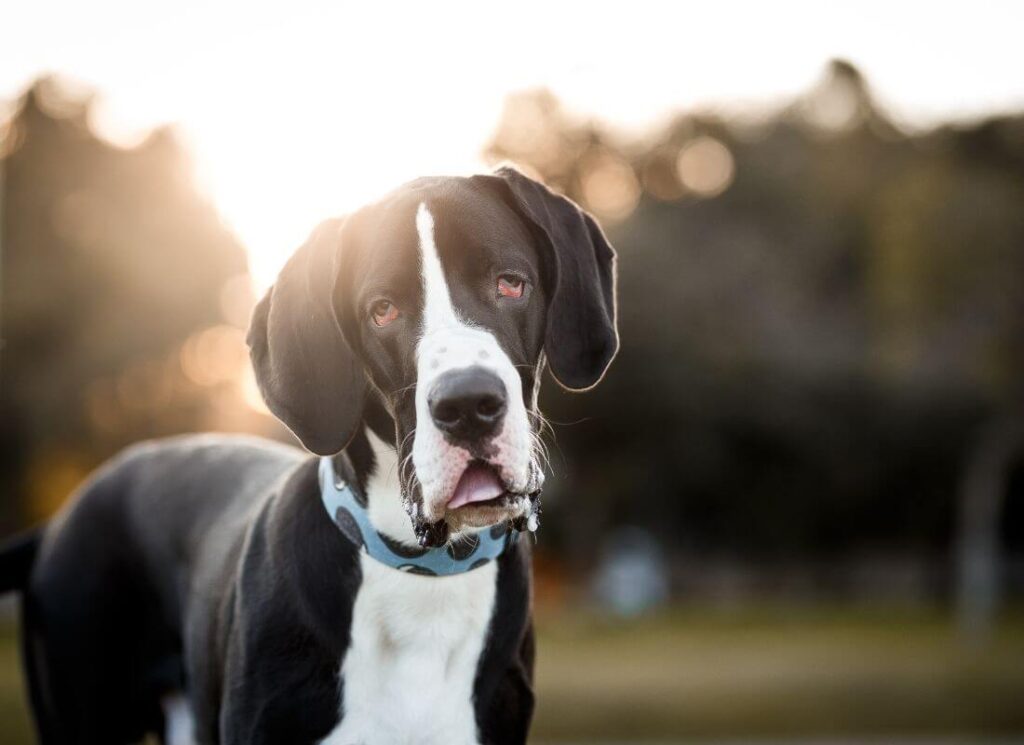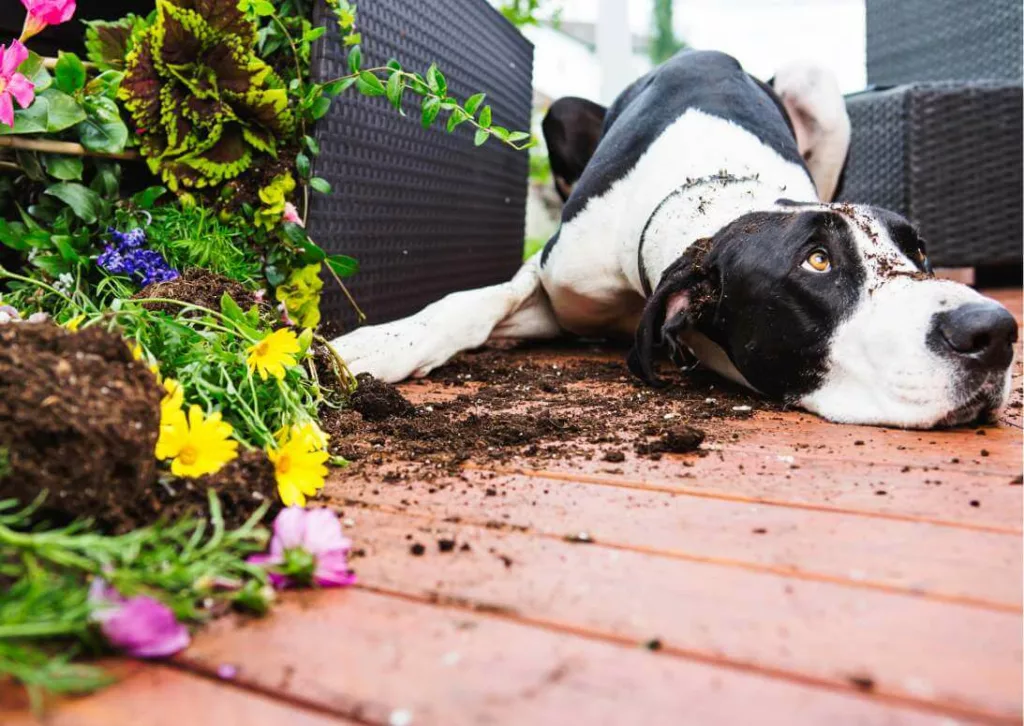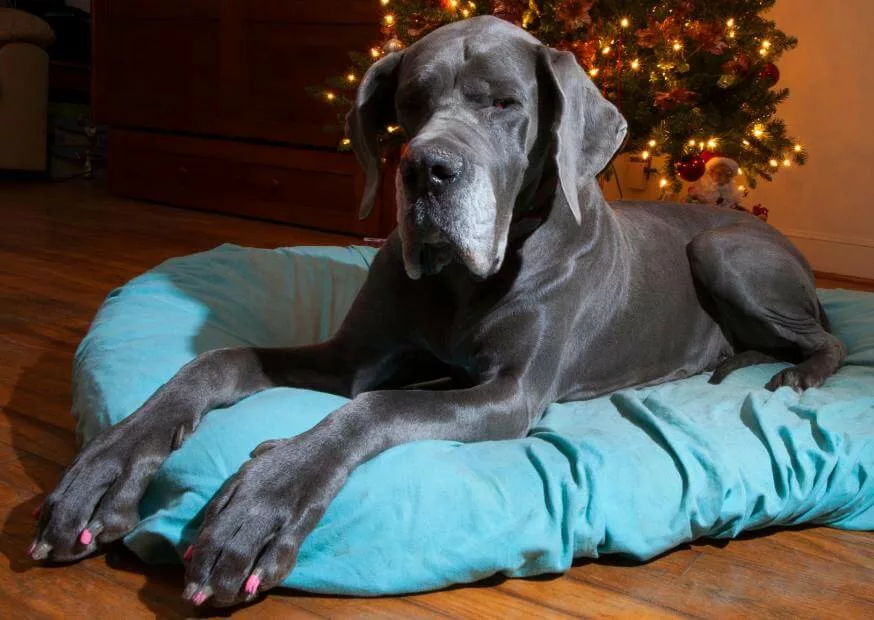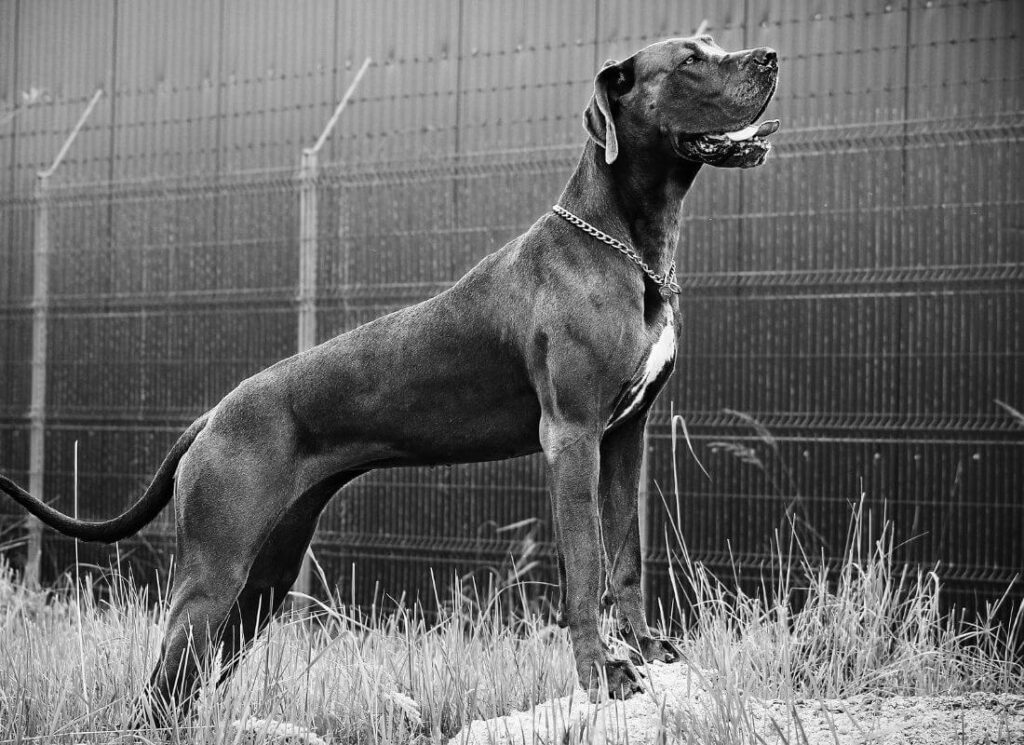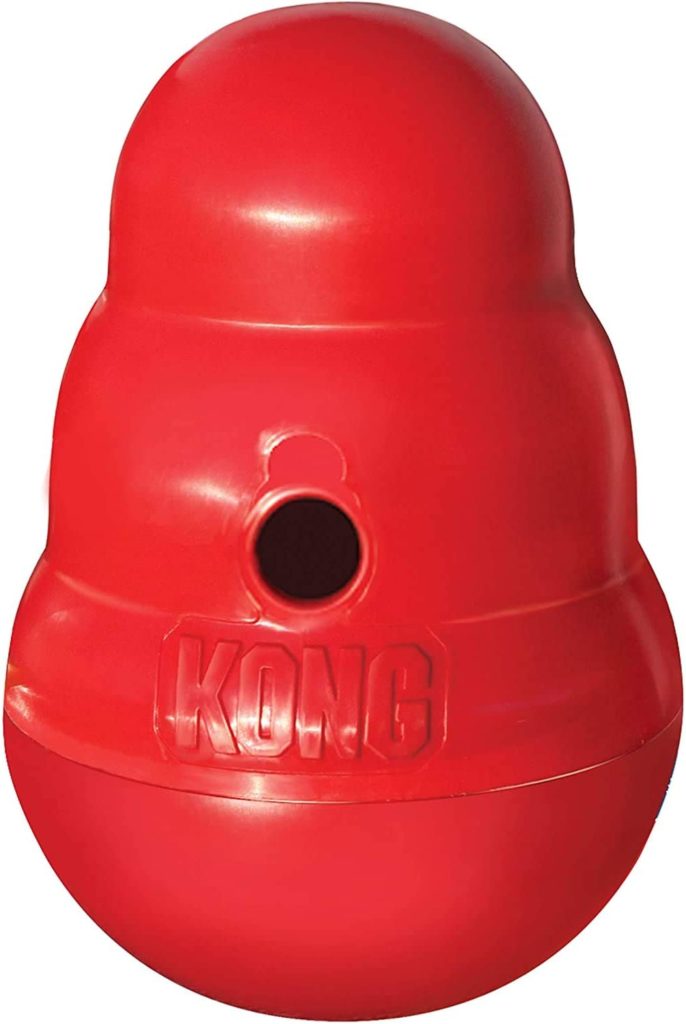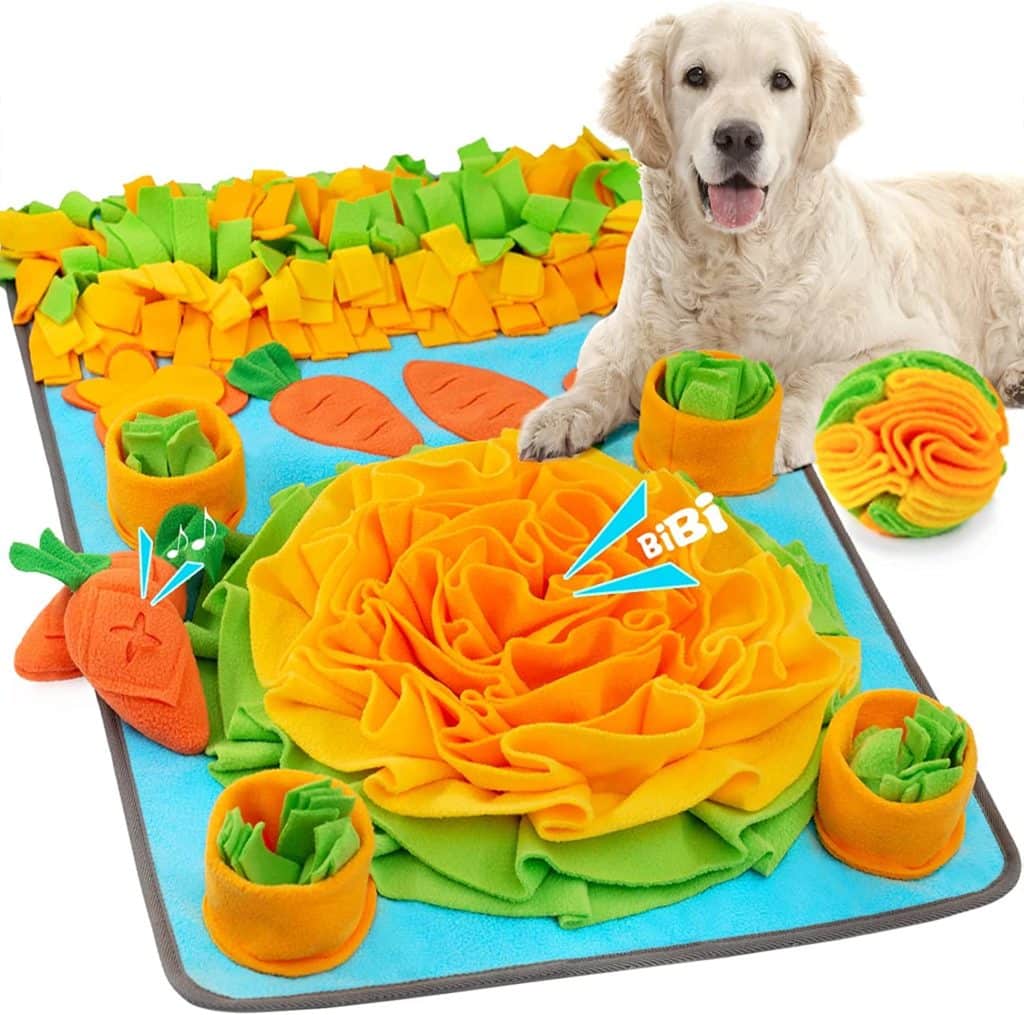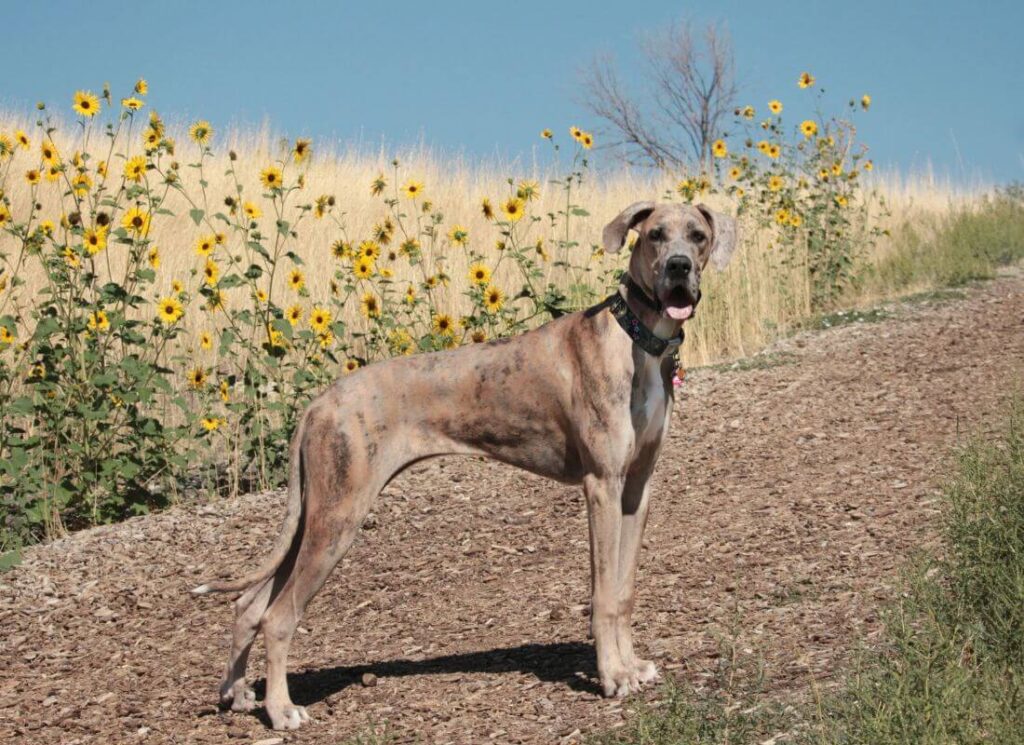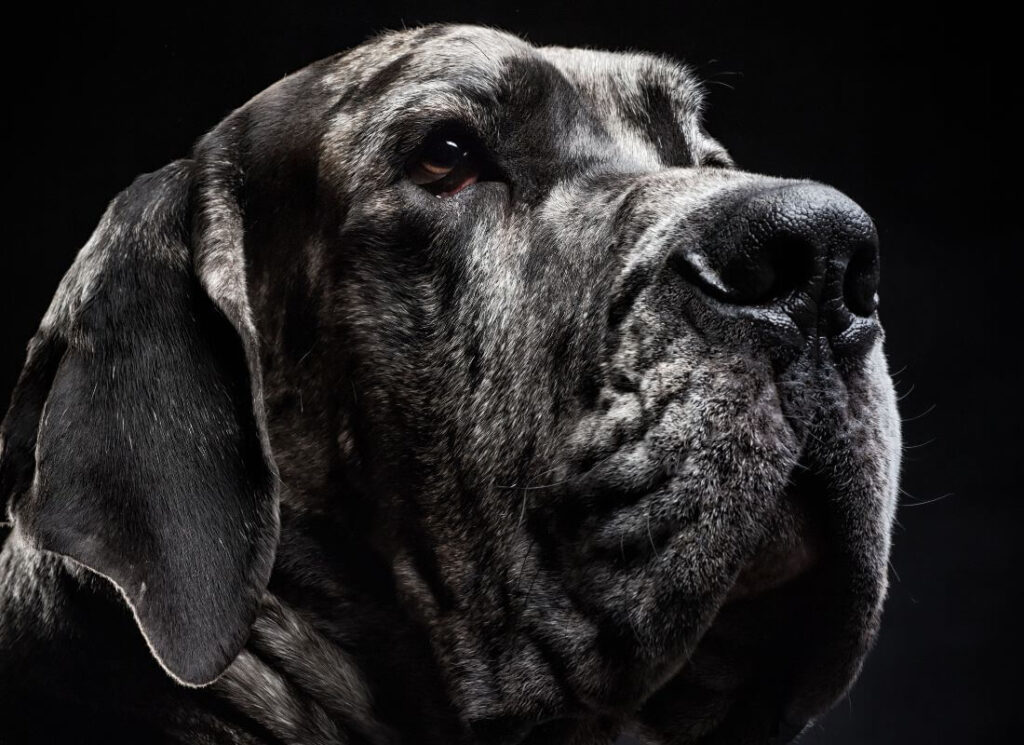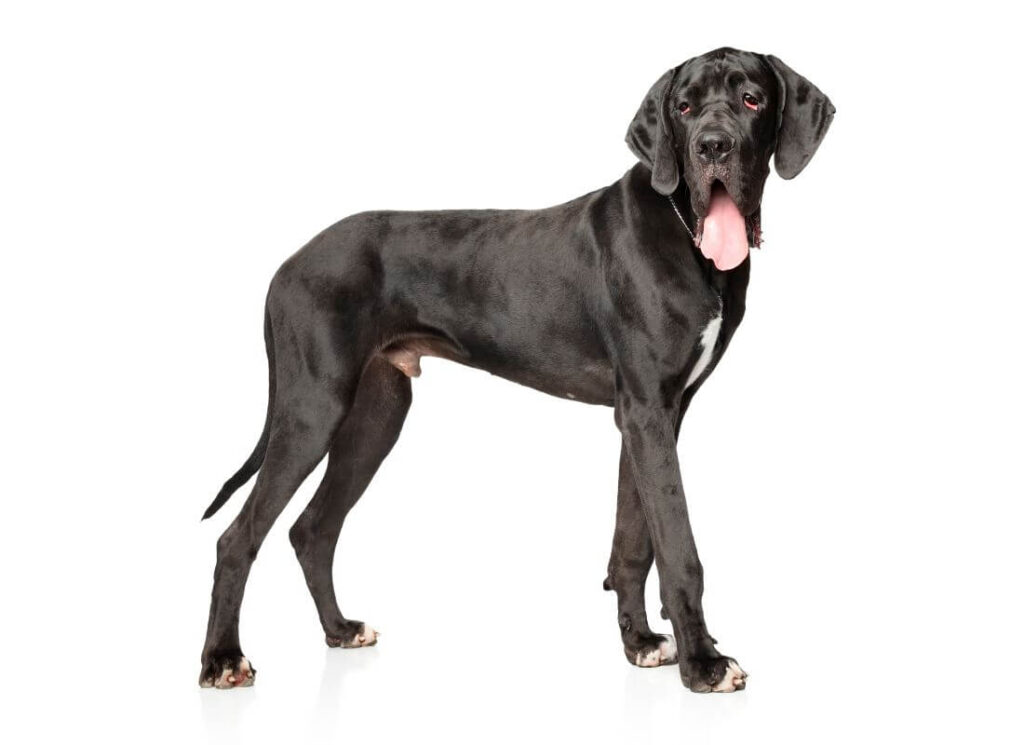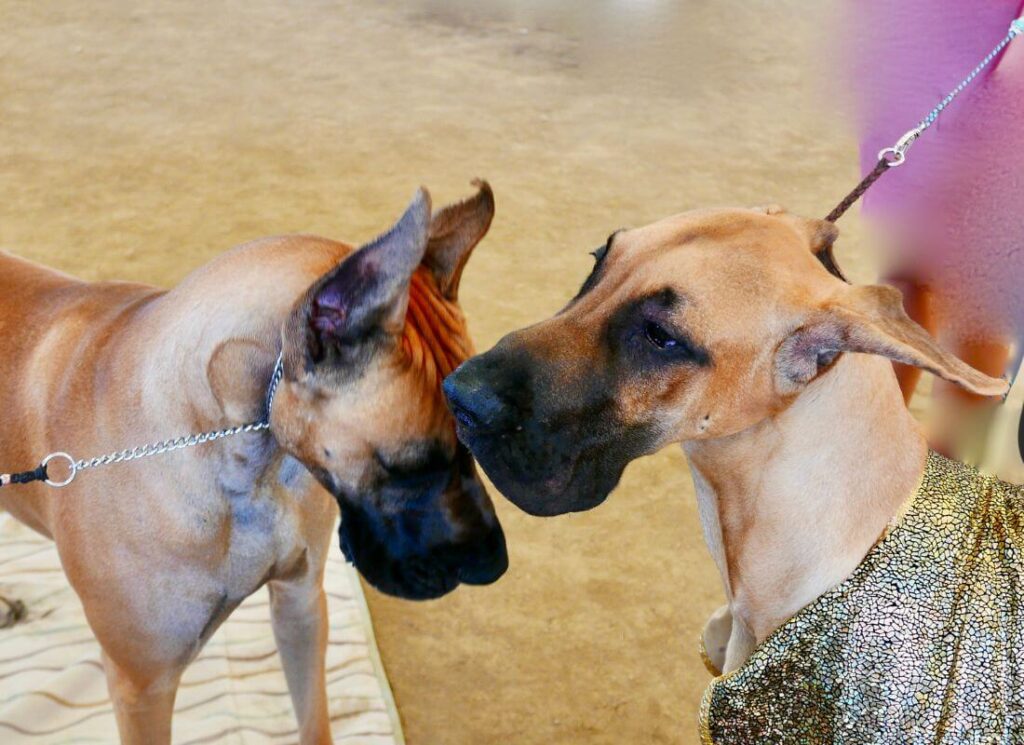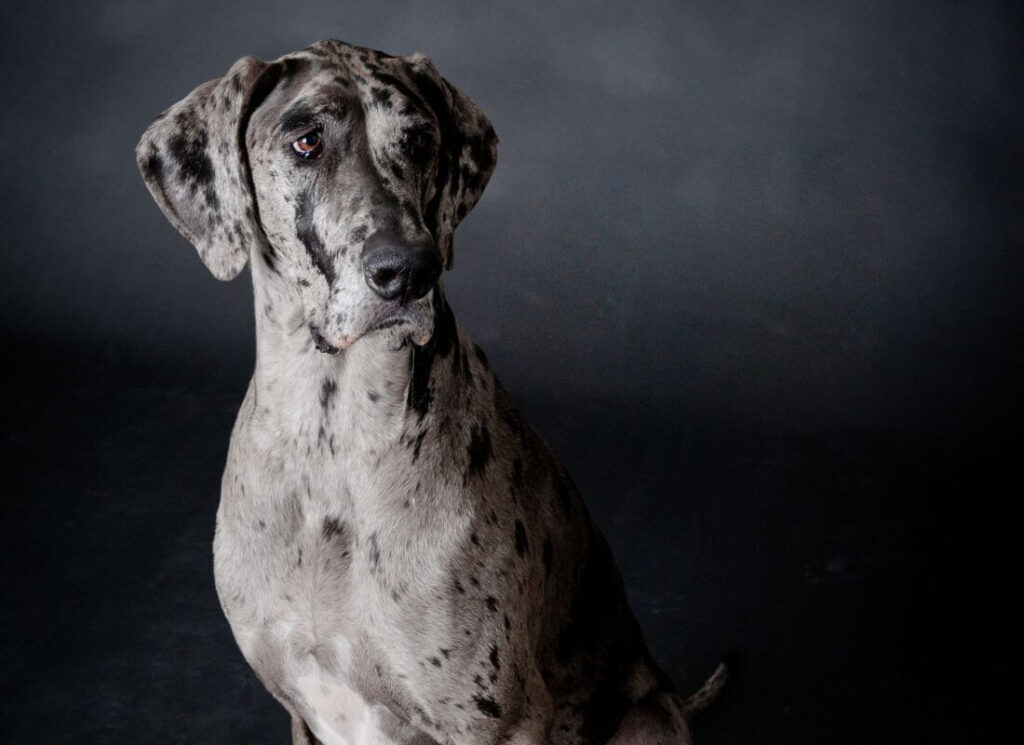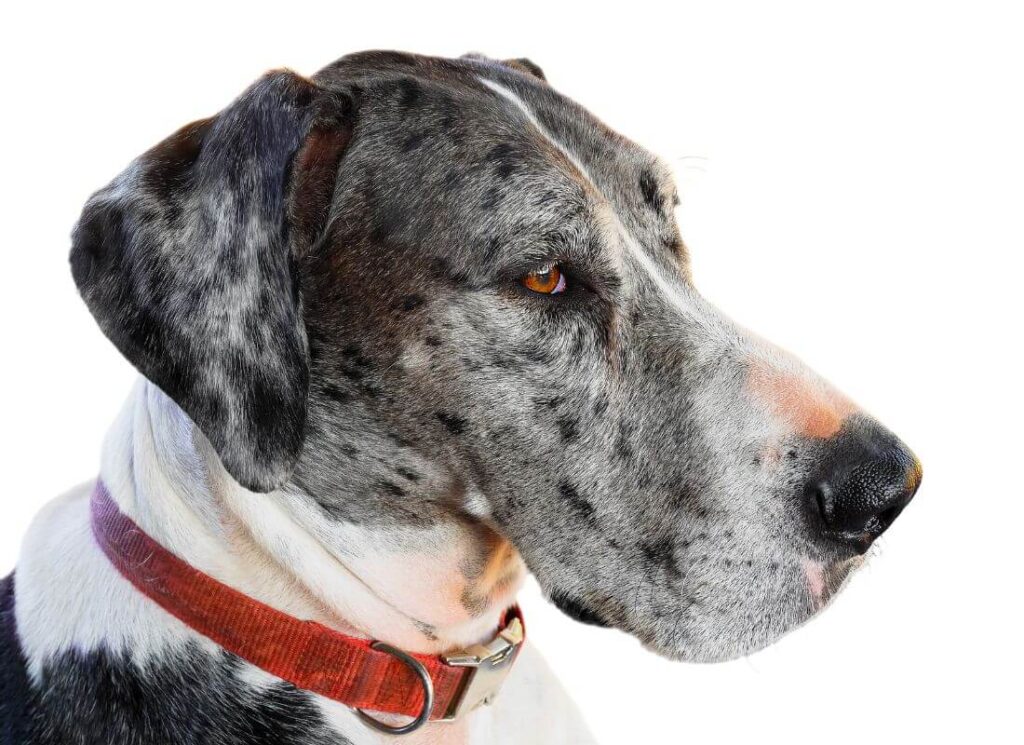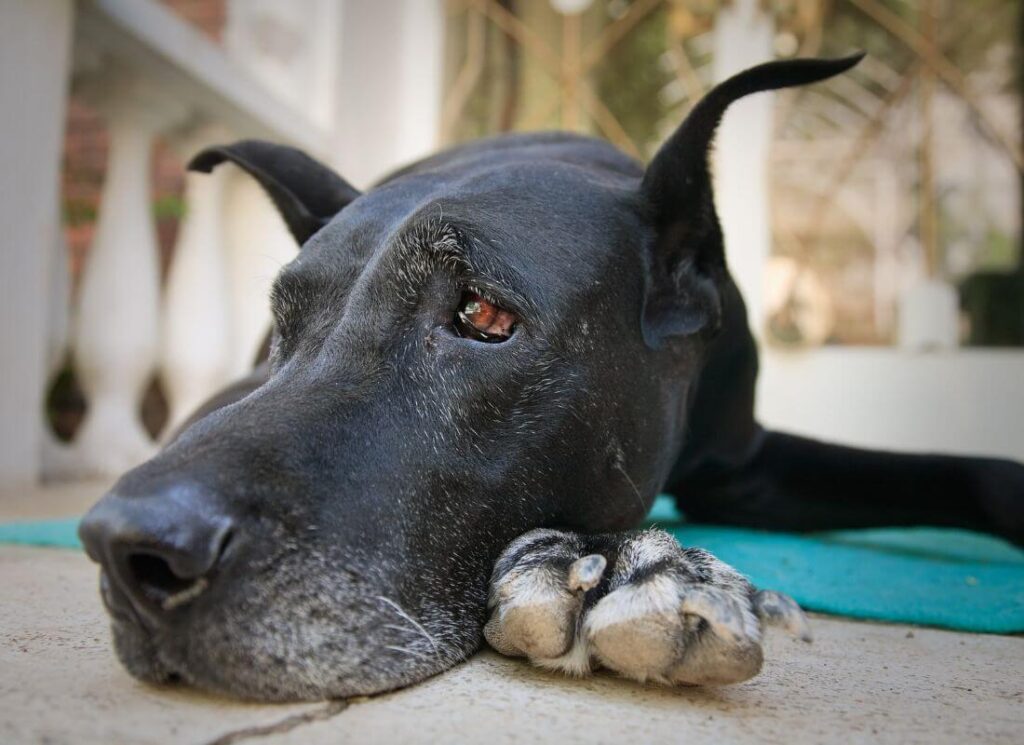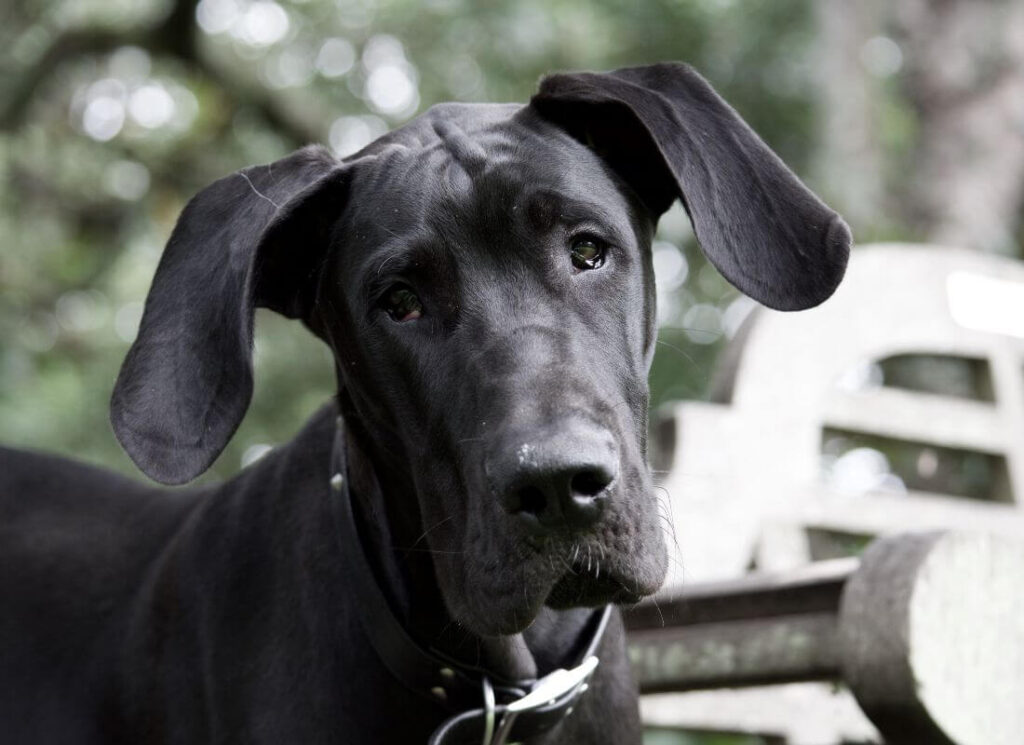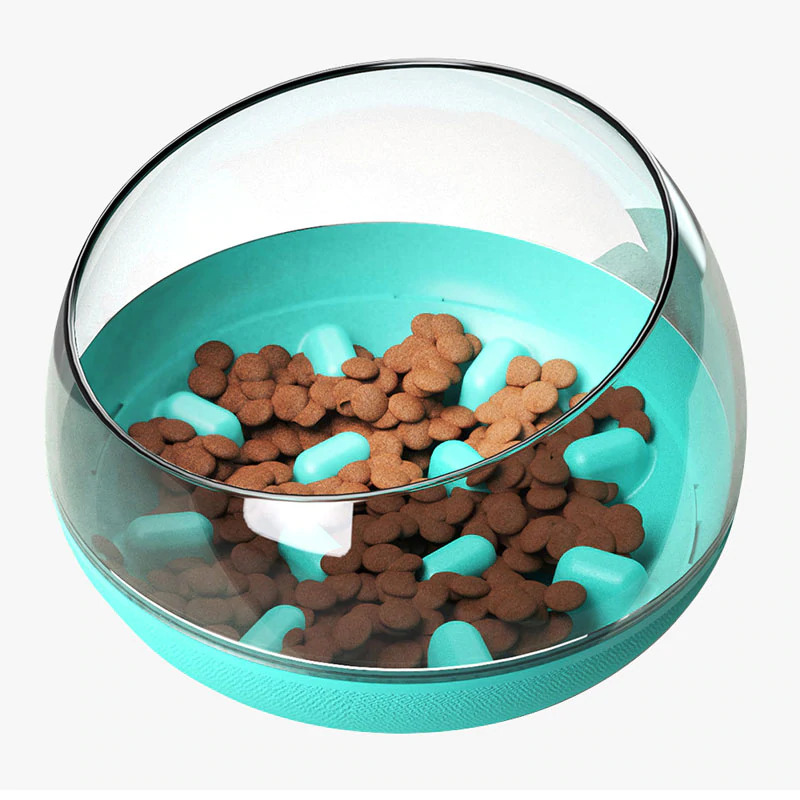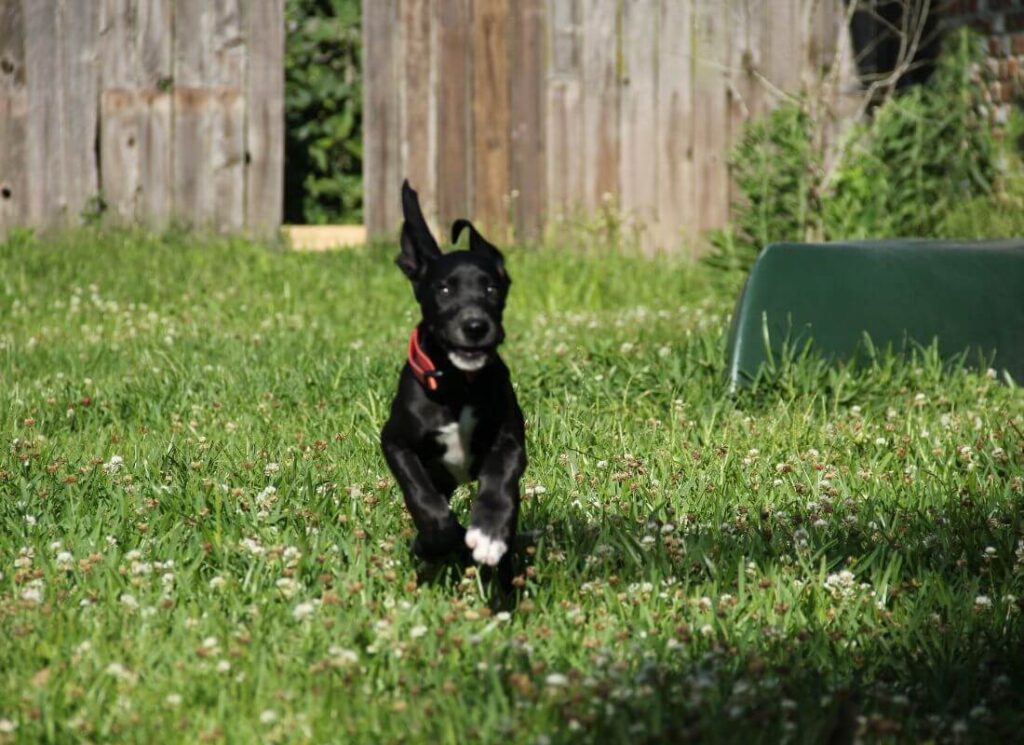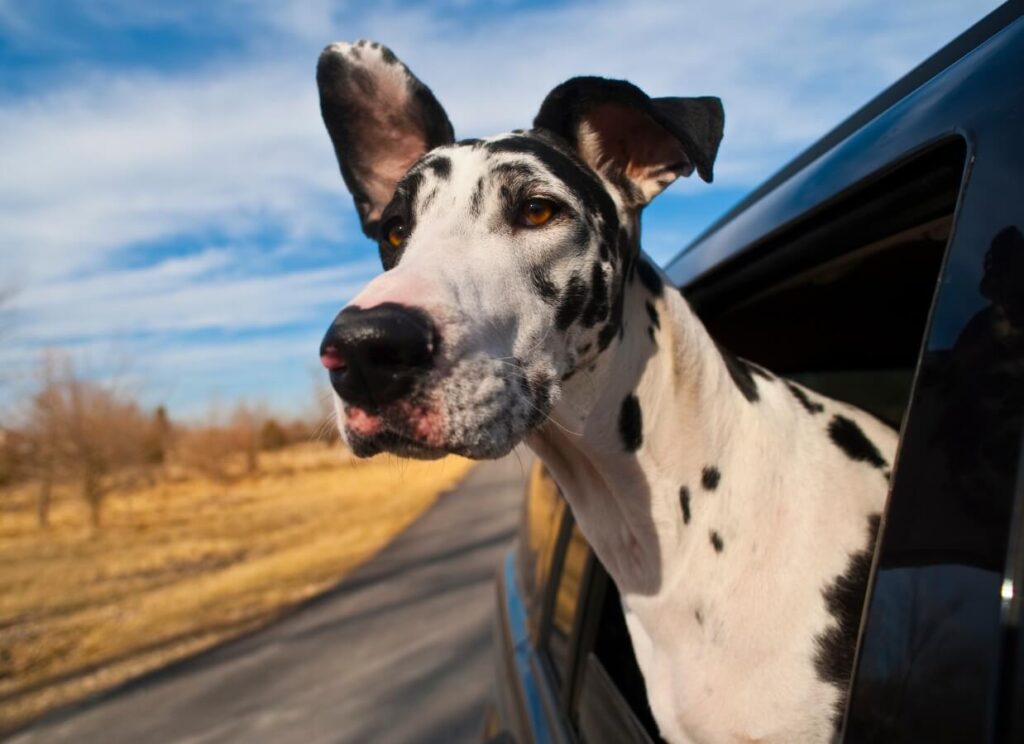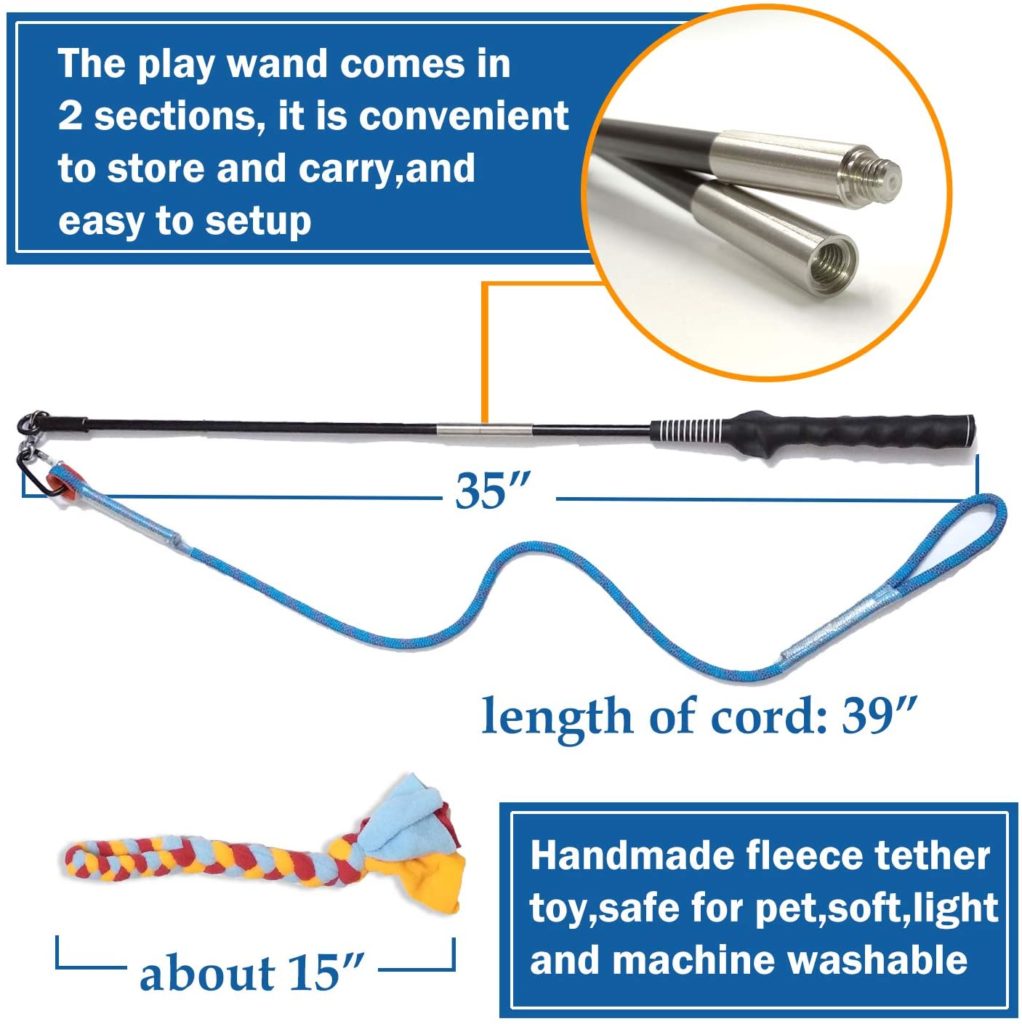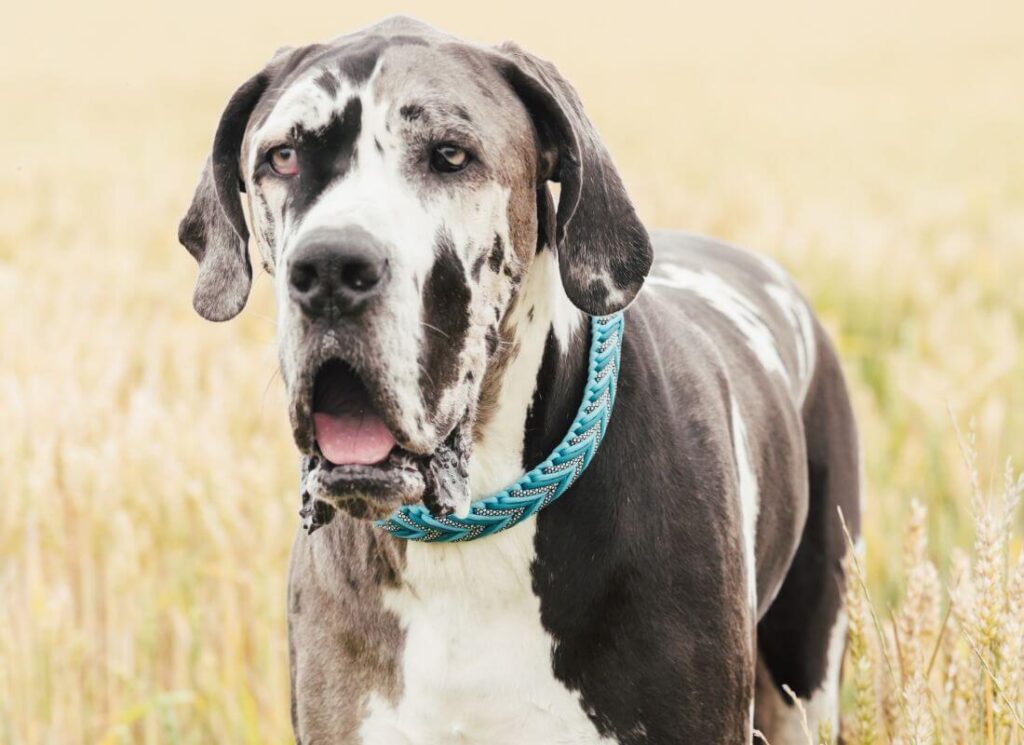Unfortunately, Great Danes, like many larger dog breeds, have shorter lifespans compared to smaller breeds. In this blog, we’re going to explore the key factors that can contribute to helping your Great Dane live longer and have a healthier and more fulfilling life.
From nutrition and exercise to healthcare and lifestyle choices, we’ll delve into the strategies and insights that can make a meaningful difference in prolonging your Great Dane’s life and ensuring you have many more years of joy and companionship together.
How to Make a Great Dane Live Longer
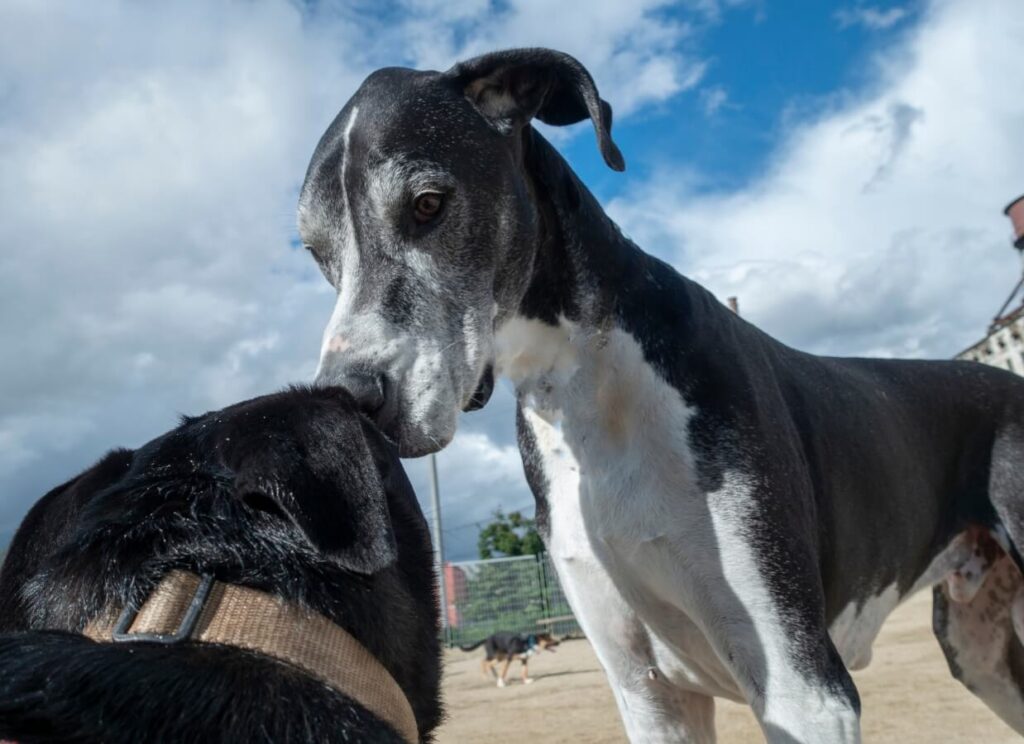
Why Do Great Danes Have Short Life Spans?
Before we can understand how to help our Great Dane dogs live longer, healthier lives we have to understand why Great Danes have short life spans in the first place.
There are 6 main reasons that Danes lives tend to be cut short:
- Orthopedic issues, including hip dysplasia
- Being overweight
- Bloat
- Heart Disease (DCM)
- Cancer
- Genetics
I placed genetics last on the list, because every single reason in the list before it can also be caused by genetics. That’s a big one, and speaks to the reasons why choosing an ethical breeder is so important.
The good news here is that there are many things you can do to extend your Great Danes lifespan!
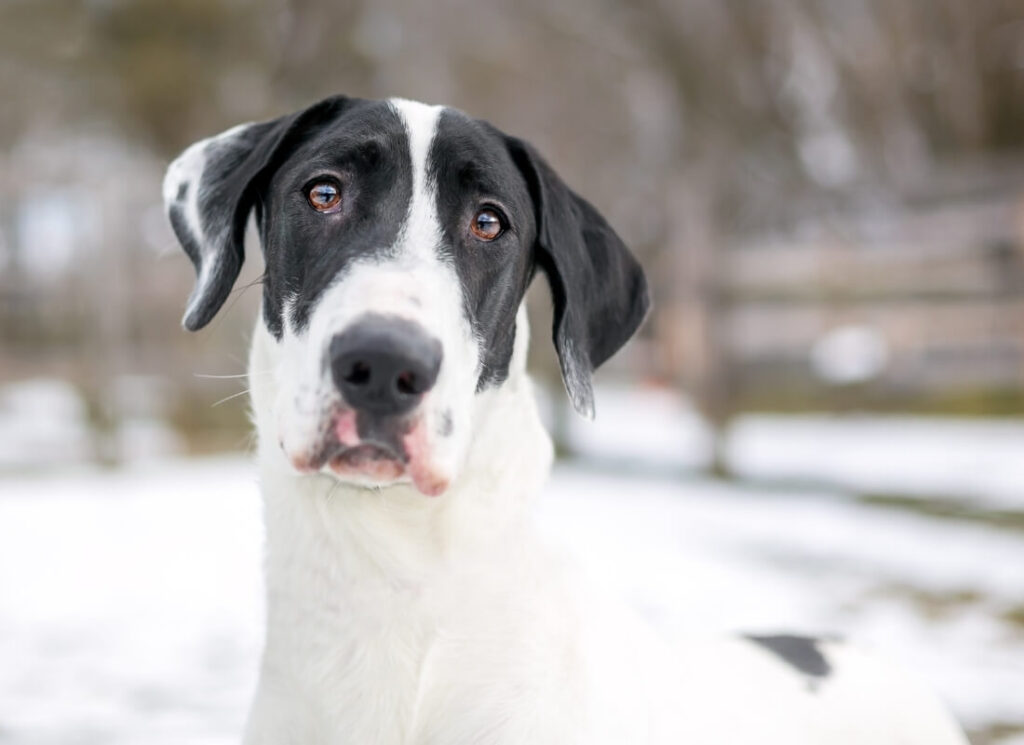
Observations about Great Danes that Live a Long Time
A quick glance around social media and at dog shows, there are a few key things seen among Great Danes who live long, healthy lives.
When we see an older (8 years +) Great Dane that is still going strong, we most often see some combination of the following:
- A dog with good genetics, from proven pedigrees
- Excellent body condition score; not overweight (this is really important)
- Sound, stable temperament, free of fear, stress, and aggression
- Excellent structure, feet, and angulation (which is genetic but also can be related to early puppy nutrition)
- Trimmed nails & clean teeth
- Well tempered dogs that received training and enrichment throughout life
- Pet parents who trust their veterinarian, keep their dog active, and feed an appropriate diet
Genetics play a huge role in temperament, overall structure, cancer risk, bloat risk, and heart disease. Of course, not all Great Danes are given exceptional genetics. Knowing that, there are still things that can be done to help your Great Dane live longer!
What Health Tests do Great Danes Need Before Breeding?
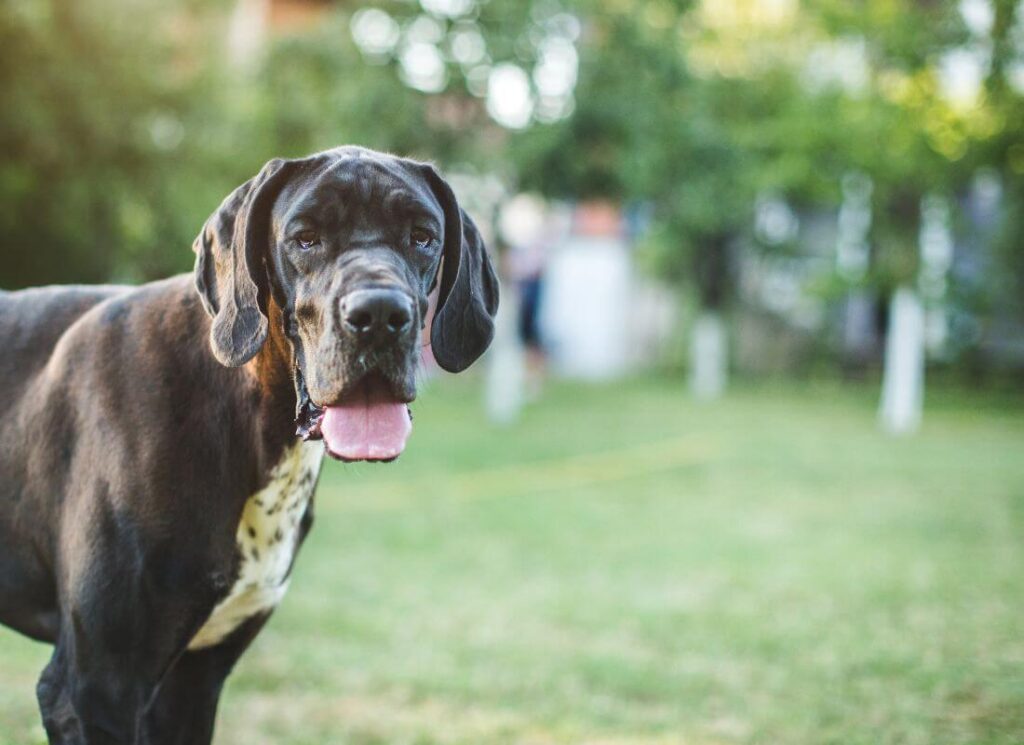
Nutrition for Great Danes
One of the easiest ways you can help extend your Great Danes life is to make sure they are getting the correct nutrition from day one.
Feeding the wrong food to a puppy can result in a lifetime of orthopedic problems including hip dysplasia. Not only that, but certain foods have been proven in research to increase the risk of heart disease!
Great Dane puppies should be fed a well-researched large or giant breed puppy food from a company who employs veterinary nutritionists, until age 2. This is the most current, science-backed recommendation available, which promotes proper bone growth, joint development, and structure.
If you aren’t sure what brands or formulas to choose, our popular Great Dane Puppy Food post will get you started.
For adult dogs over the age of 2, continue onto a grain-inclusive adult formula that contains a meat meal, and add balanced canned or fresh toppers. The addition of carefully selected wet foods can decrease the risk of bloat! If the toppers are unbalanced, do not allow them to exceed more than 10% of the daily intake of food.
Here is our list of Great Dane foods that promote health, wellness, and longevity. These brands are commonly fed by veterinarians and to the top show and sport dogs, for a reason:
For Adults:
- Purina Pro Plan Sensitive Skin and Stomach Large Breed (Salmon based, chicken free)
- Purina Pro Plan Large Breed Shredded Chicken & Rice (Large Pieces & Chicken Shreds!)
- Purina Pro Plan Large Breed Weight Management (Get the weight off)
- Purina Pro Plan Large Breed Bright Mind Age 7+ (for Senior Great Danes)
- Purina Pro Plan Giant Breed (Hard to find, might be discontinued)
- Royal Canin Giant Breed (Amazing for dogs with chronic loose stools, TOP TIER)
- Eukanuba Large Breed (Great for active and sport dogs)
- Purina One Smart Blend Large Breed (Fantastic budget-friendly option)
- Hill’s Science Diet Large Breed Beef & Rice
- Purina Pro Plan 30/20 Sport Beef & Bison
For Puppies:
- Purina Pro Plan Large Breed Puppy – any flavor!
- Purina Pro Plan Sensitive Skin & Stomach Large Breed puppy – TOP PICK, salmon-based
- Eukanuba Large Breed Puppy (Great for active and sporting dogs)
- Purina One Large Breed Puppy (Excellent budget option)
- Hill’s Science Diet Puppy Large Breed
- Royal Canin Giant Puppy Dry Dog food (to age 12 months) – TOP PICK, PREMIUM OPTION
- Royal Canin Giant Junior Dry Dog food (8-24 months)
- Purina Large Breed Puppy Chow
Check out THE GIANT DOG FOOD PROJECT to compare brands and values.
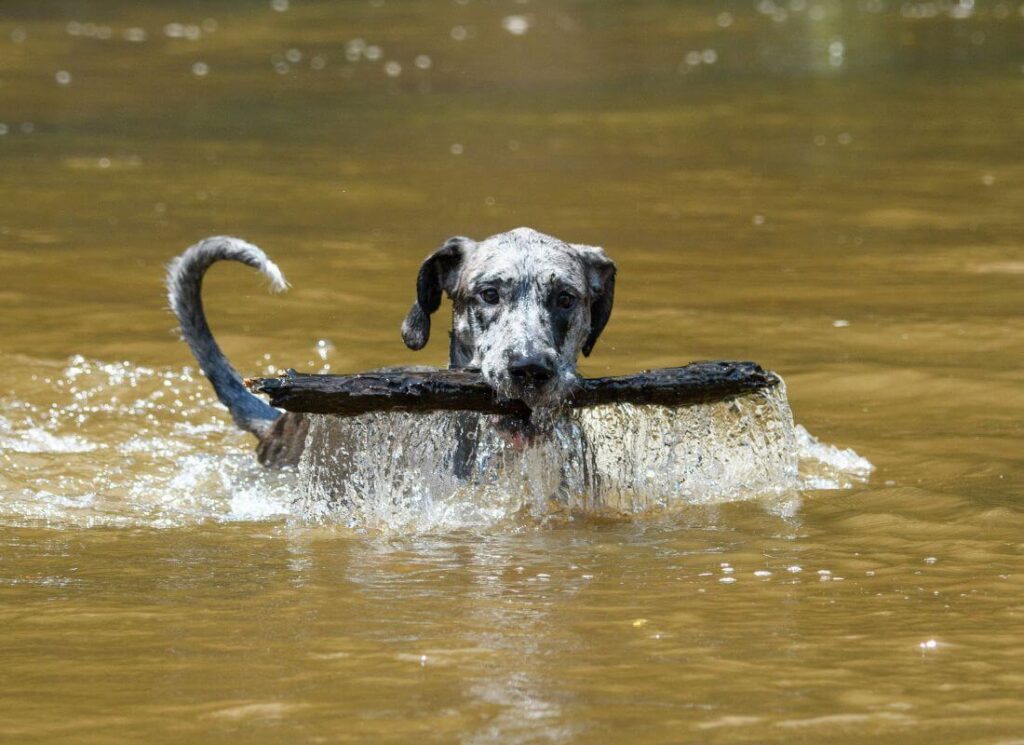
Heart Disease in Great Danes
DCM (Dilated Cardiomyopathy), AKA Heart Disease or congestive heart failure is one of the top reasons why Great Danes don’t live long. Many Danes with DCM will show very little signs and may suddenly collapse one day, or die while undergoing surgery.
This horrible disease is primarily genetic. It is passed down through the pedigree.
When purchasing a puppy from a breeder, verify that both parents received OFA heart echocardiograms. The results of those tests will be available at www.ofa.org and if it isn’t? Run. Your breeder is unethical and may be passing heart disease onto the puppies.
DCM can also be caused by unbalanced dog food. This is commonly a problem with kibbles that contain a lot of peas, lentils, potatoes, chickpeas, and garbanzo beans, as well as any diet that is not correctly formulated in some way.
Because Great Danes are already genetically prone to DCM, feeding a low-quality (commonly grain-free) diet effectively increases their risk of dying suddenly from heart disease.
Read more about the DCM – Nutrition Link HERE
Learn about DCM in Great Danes HERE
Was the DCM and Grain-Free Foods Link Debunked? Read more HERE.
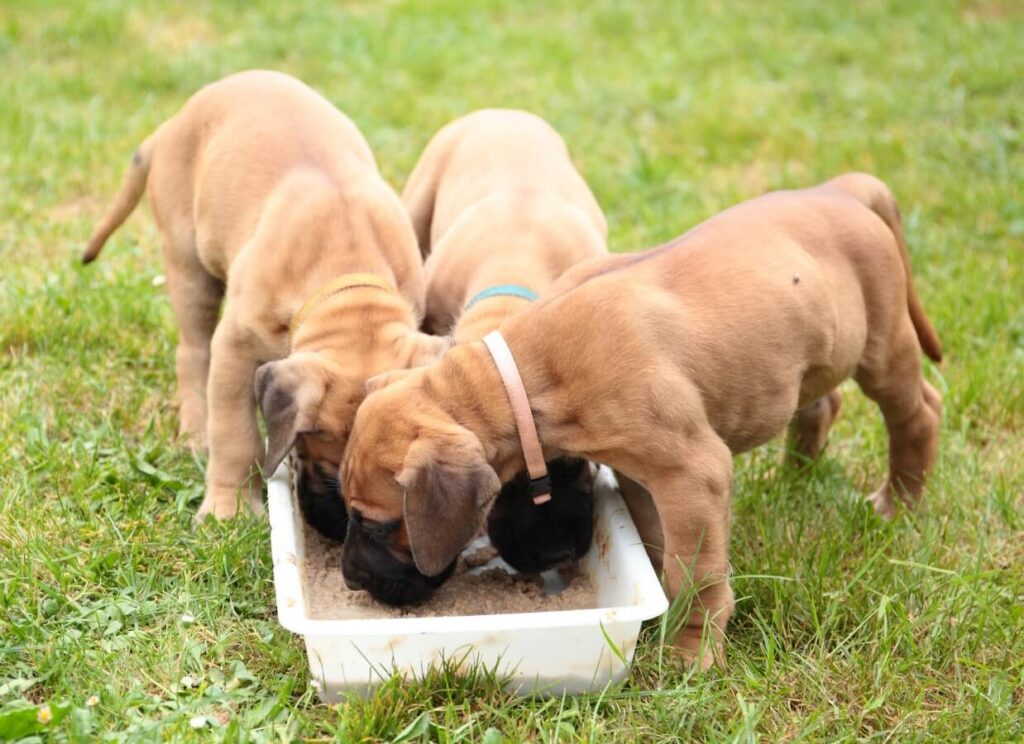
Active, Lean Great Danes Live Longer Lives
Did you know that lean dogs with a healthy body condition score live, on average, 2 years longer than dogs that are overweight or obese?
A healthy Great Dane is leaner than you might think and should be covered in muscle, not fat.
Read more from the Purina Body Condition Scoring Guides HERE
Great Danes should have a defined waist and may even show a few ribs. They should be graceful, powerful, and athletic. Not stocky, droopy, slow, or heavy.
Excess weight on your Great Dane increases their risk of joint disorders and pain, heart disease, diabetes, and complications during anesthesia and surgery. An overweight dog that experiences a health emergency (such as bloat) is less likely to survive, too.
Talk to your veterinarian about helping your dog lose weight and gain muscle!
We recommend off-leash training for Great Danes so that they can move freely without potentially damaging physical restraints. Off-leash movement on soft, varied terrain helps build muscle and maintain fitness levels, and we can’t think of a more fun way to help your Great Dane live longer!
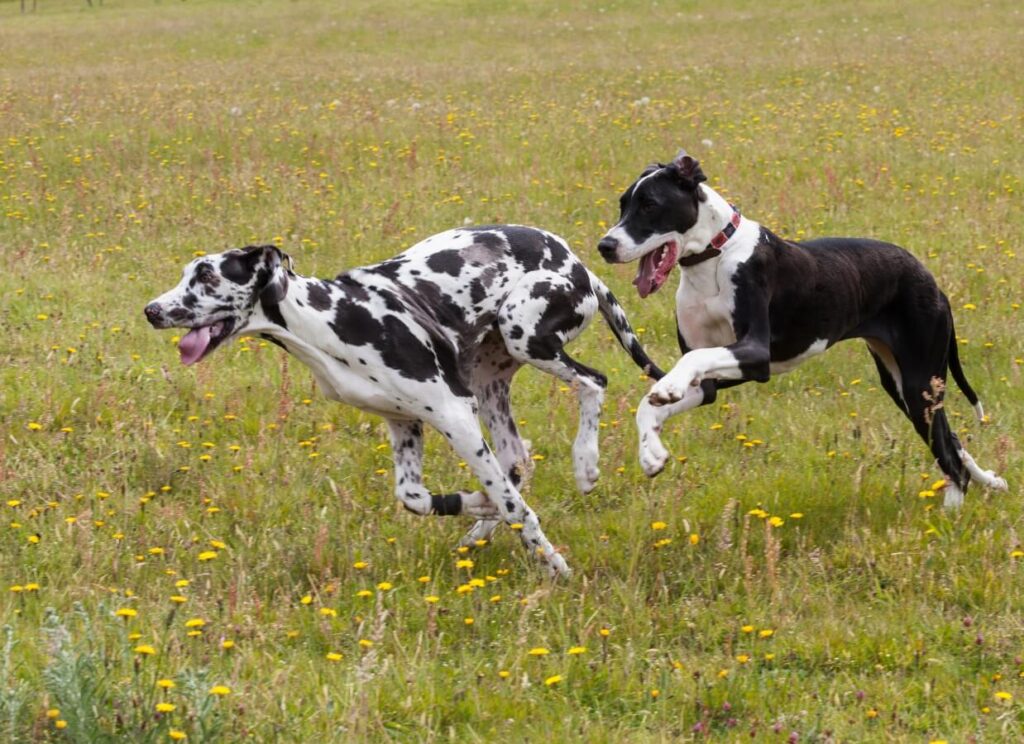
Bloat in Great Danes
Bloat (also known as GDV or Gastric dilatation and volvulus, aka ‘bloat and torsion’) is an emergency that will affect 1-in-4 Great Danes on average. When bloat occurs, the stomach fills up with gas, fluid, or air and then may twist over itself (torsion). Torsion is both painful and deadly.
Fixing this requires expensive emergency surgical treatment and many dogs (especially those with heart disease, obesity, blood clotting disorders, or other serious health issues) do not make it out alive.
Don’t let these statistics scare you, however! There are things you can do to reduce the risk of bloat and torsion so that your Great Dane can live longer.
FACT: Studies have shown that moderate exercise after meals might decrease the risk of bloat by as much as 50%! This goes against everything we’ve been taught. Read more HERE.
Bloat is, as most things, primarily genetic. When choosing a breeder, verify that there is no history of bloat, poor gut health, or bad temperaments in the last several generations.
Consider a gastropexy; this life-saving and simple procedure results in better outcomes for Danes that bloat.
Feed a quality kibble that contains meat meal, and offer 2-3 small meals each day topped with some kind of balanced canned, fresh, or raw food. Encourage slow, stress free eating.
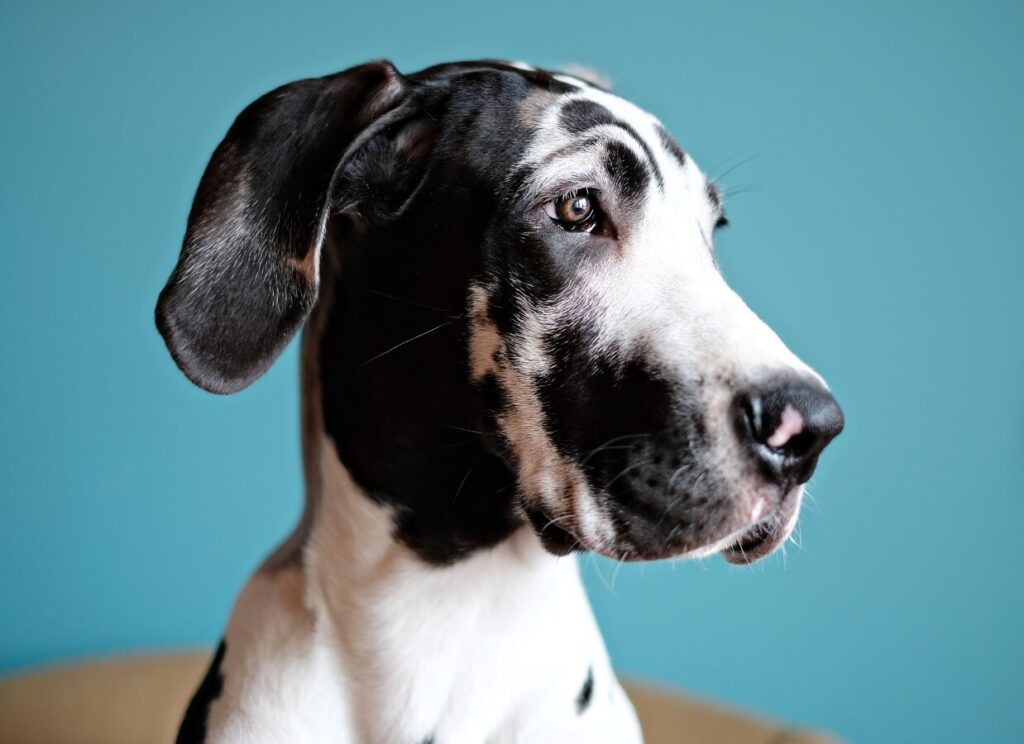
Orthopedic Disorders in Great Danes
Another reason why Great Danes have short lifespans is because they suffer, unfortunately, from orthopedic disorders.
Nutrition, especially in puppies, plays a huge role here but so do genetics and exercise.
Great Danes nails should be trimmed at least twice each month. We recommend a Dremel tool. Overgrown nails lead to pain and joint damage.
Wobblers disease is an unfortunately common disorder in Great Danes that leads to painful and debilitating mobility issues. Read more about wobblers HERE.
IMGD, hip dysplasia, flat feet, and poor overall conformation also have genetic roots that must be addressed by thoughtful, careful breeding practices as well as appropriate movement and strength building.
For dogs with structural and orthopedic issues, working with a canine physical therapist and a veterinarian is a must.
Do not purchase puppies from breeders who are breeding dogs that don’t meet the written structural standard for Great Danes. These breeders are genetically perpetuating structural problems that debilitate Great Danes and shorten their life span.
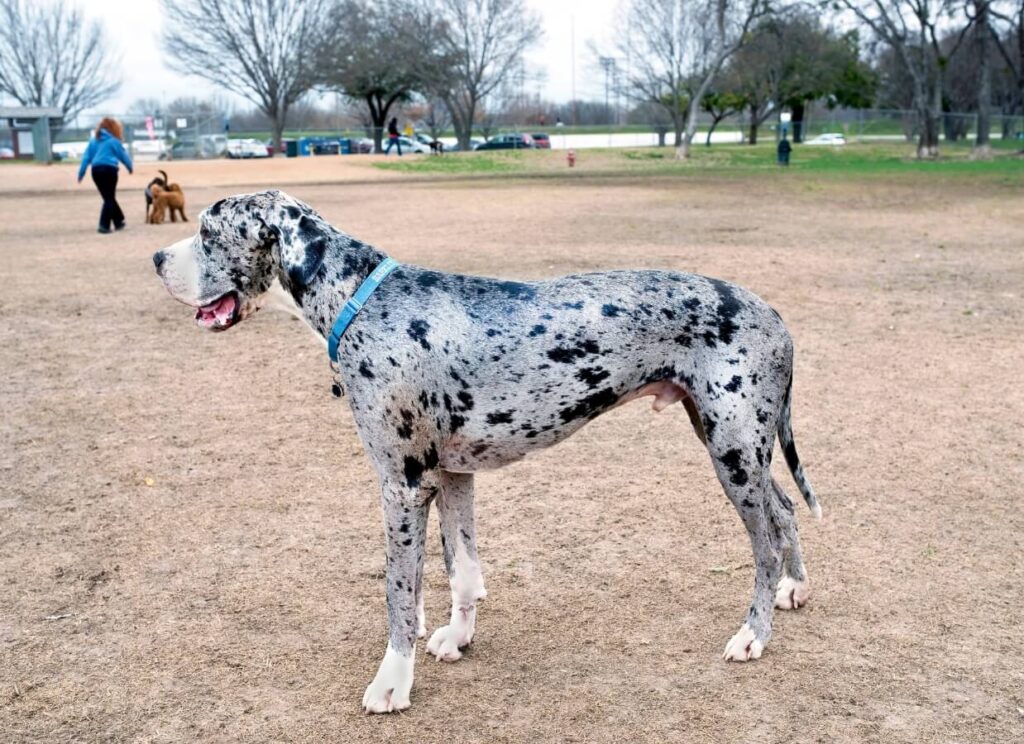
Cancer in Great Danes
Unfortunately, Great Danes are susceptible to certain types of cancer, including osteosarcoma.
Osteosarcoma is a bone cancer that often appears suddenly and often requires amputation and treatment or euthanasia.
There are many theories about what causes cancer in dogs (such as dog food or vaccines), however, these theories have never been proven or founded.
It is understood, however, that cancer is primarily a genetic disorder.
Some dogs are at higher risk than others; for example, early spay and neutering has been correlated in studies with an increased risk of osteosarcoma, hemangiosarcoma, lymphoma, and mast cell tumors.
Some researchers have also theorized, but not yet fully studied, that there may be a link between excess calcium intake and overfeeding in puppyhood to dogs that develop brittle bones and bone cancers later in life.
We recommend keeping Great Danes intact until 18-24 months, if possible, and feeding an appropriate large or giant breed puppy food with well-controlled calcium levels to dogs under the age of 2. Never feed any food with more than 1.2% calcium.
Excess calcium is damaging to bones during growth, and damaged bones are more prone to disorders such as arthritis, bone cancer, and wobblers disease.
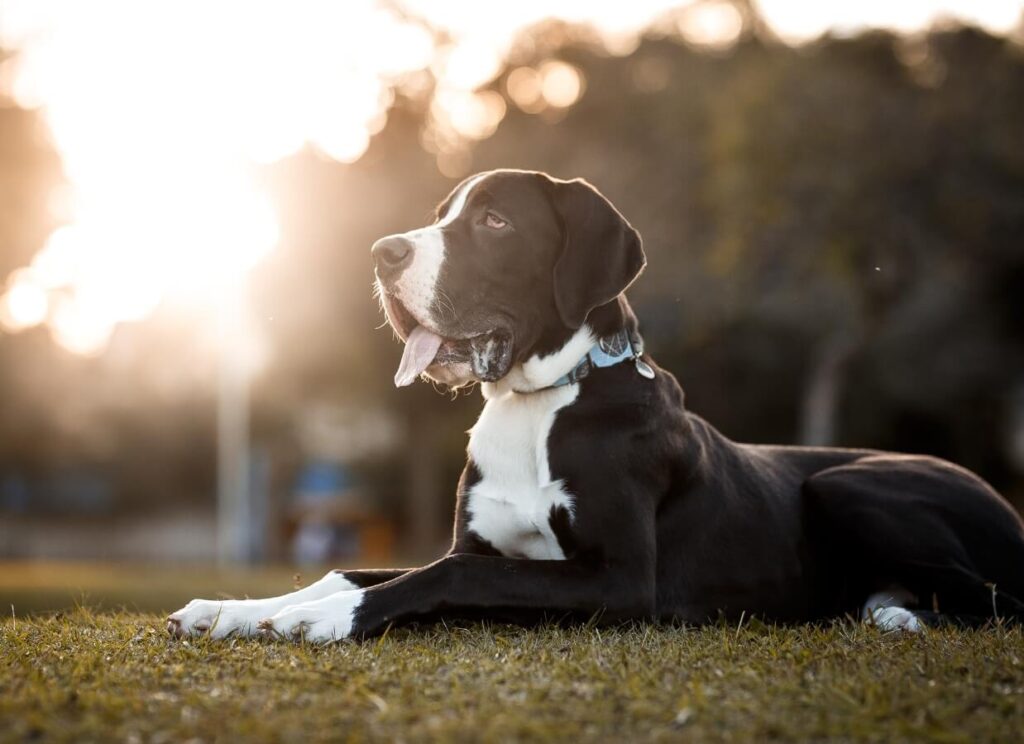
Help Your Great Dane Live Longer by Reducing Stress
Stress and anxiety are not healthy for humans or dogs.
Studies show that increased levels of cortisol and adrenaline can contribute to a shorter life span by weakening the immune system and causing problems with the heart, gastrointestinal, and endocrine systems.
Dogs that are chronically stressed are going to be more susceptible to health problems of all kinds.
Here are some signs that your dog is stressed or anxious:
- Pacing, whining, crying
- Destructive behavior
- Drooling, panting
- Ears pinned, hunched body language
- Timid or fearful behaviors
- Growling, nipping, and aggression
- Depression
Reduce your dogs stress by making sure you offer plenty of exercise and enrichment. This may mean changing your routine and habits to alleviate boredom and get your dog doing more.
Our E-Collar training guide is a popular resource for helping anxious Great Danes get safely off-leash and exploring the world.
You can also reduce stress by using enrichment toys such as the West Paw Toppl Toy. Stuff it with soaked kibble or canned food and freeze before serving.
Talk to your veterinarian about supplements and calming care for dogs that are stressed by fireworks and loud noises, too. This calming probiotic may be an excellent choice for your dog.
Work with a modern, positive balanced dog trainer on confidence building and socialization. A scent work class may be just the ticket!
Avoid outdated training techniques (alpha/dominance, Cesar Milan, ‘police dog training’, etc.) which use a lot of intimidation and stress to shut behaviors down.
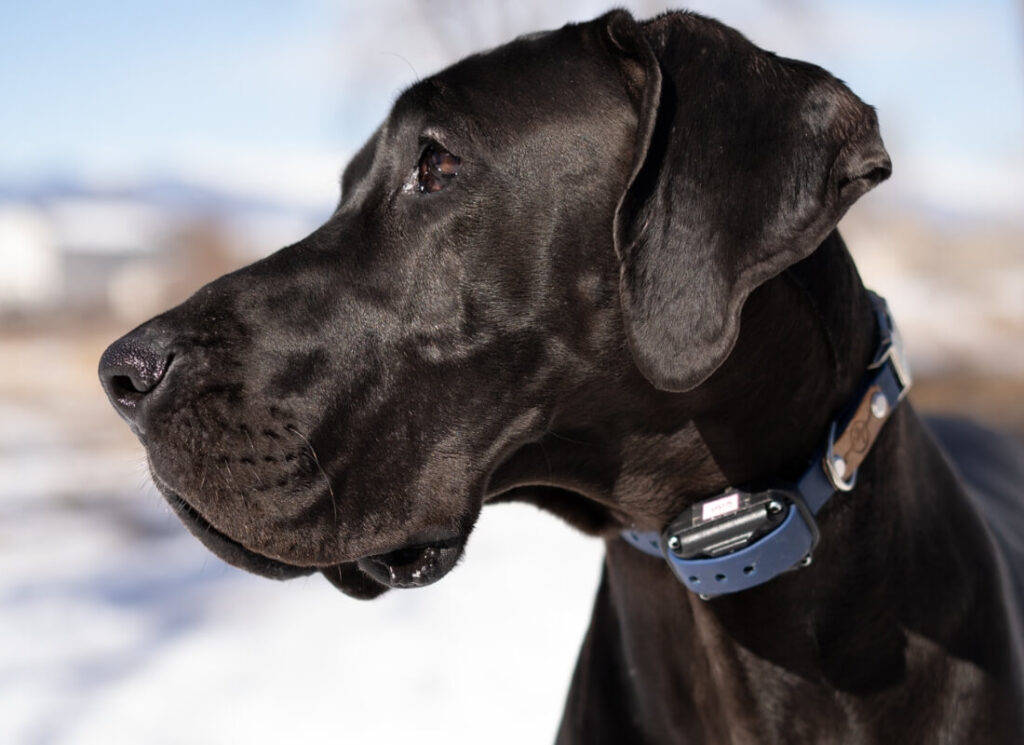
Final Tips to Extend a Great Danes Lifespan
Here are a few final tips.
See your veterinarian, regularly. Complete a full blood panel every year so that developing health problems (such as thyroid disease, liver and kidney problems, or diabetes) can be addressed early.
Before surgery, pay the extra money for a full exam, blood work, and health screening.
Keep your dog up to date on flea and tick prevention. Reactions to preventatives are typically minor and happen much less often than the rate at which dogs catch nasty diseases from parasites; you do not want to put a Dane through heartworm treatment!
Have your dogs teeth cleaned by a veterinarian. Nasty teeth lead to pain, infections, and heart damage.
Make sure your dog always has clean, fresh water available from a clean bowl (wash daily or as often as possible).

